Introducing the ultimate cinematography textbook
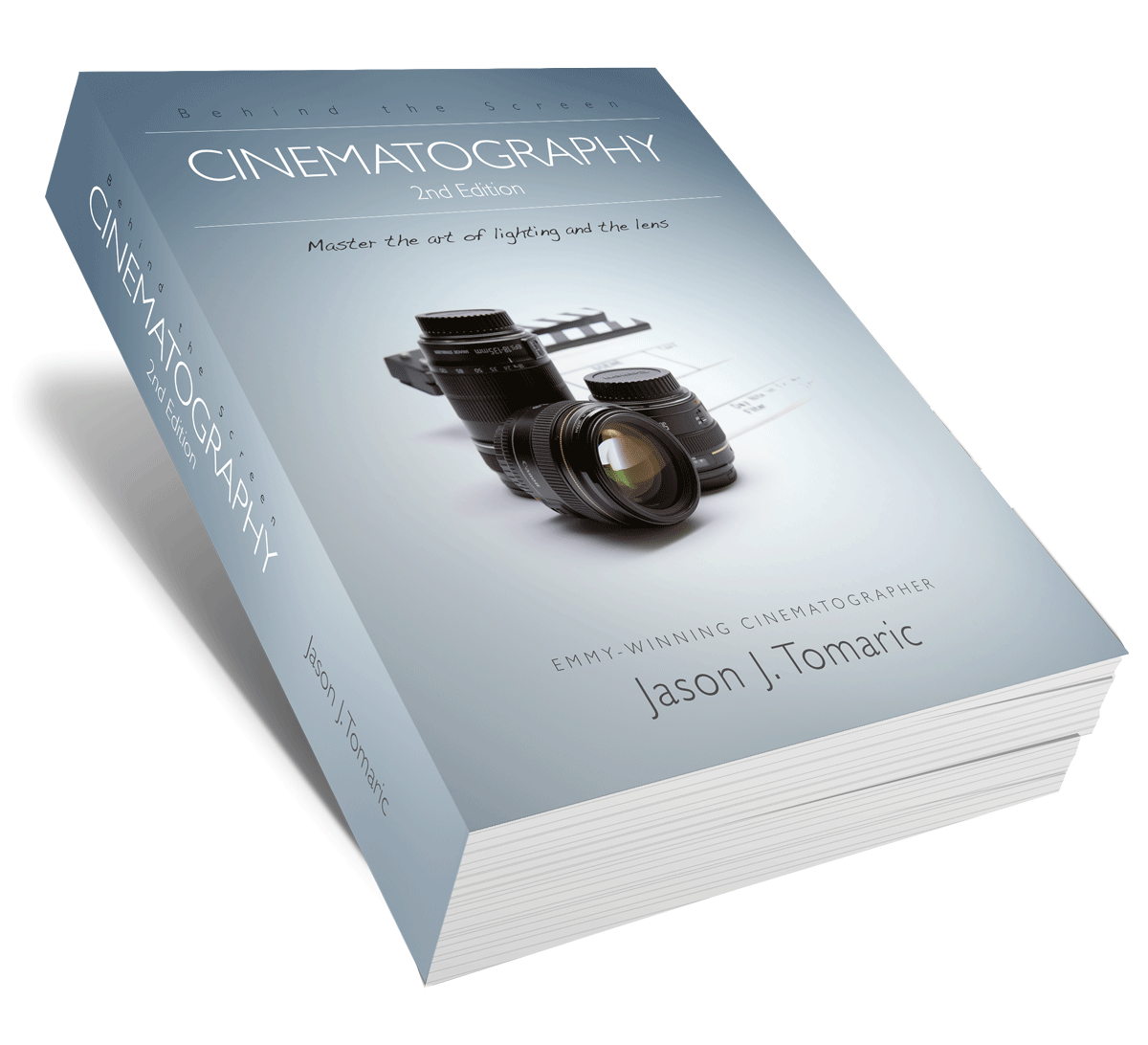
Cinematography - 2nd Edition
The definitive academic textbook designed to guide students through the art, craft, and technique of modern cinematography.
Enhance your curriculum with Cinematography – 2nd Edition, a comprehensive, lavishly-illustrated textbook that guides students through the tools, techniques, and artistry of modern cinematography.
Skillfully written by Emmy-winning cinematographer Jason Tomaric, Cinematography – 2nd Edition links theory with real-world application in an easy-to-read, thorough textbook that works independently or in concert with the FilmSkills online curriculum.
- Paperback
- 656 pages
- 7.5 x 1.48 x 9.25 inches
- Language: English
- ISBN-13: 979-8878942713
"It's difficult to think of a step in the process that Tomaric fails to address."
– American Cinematographer Magazine
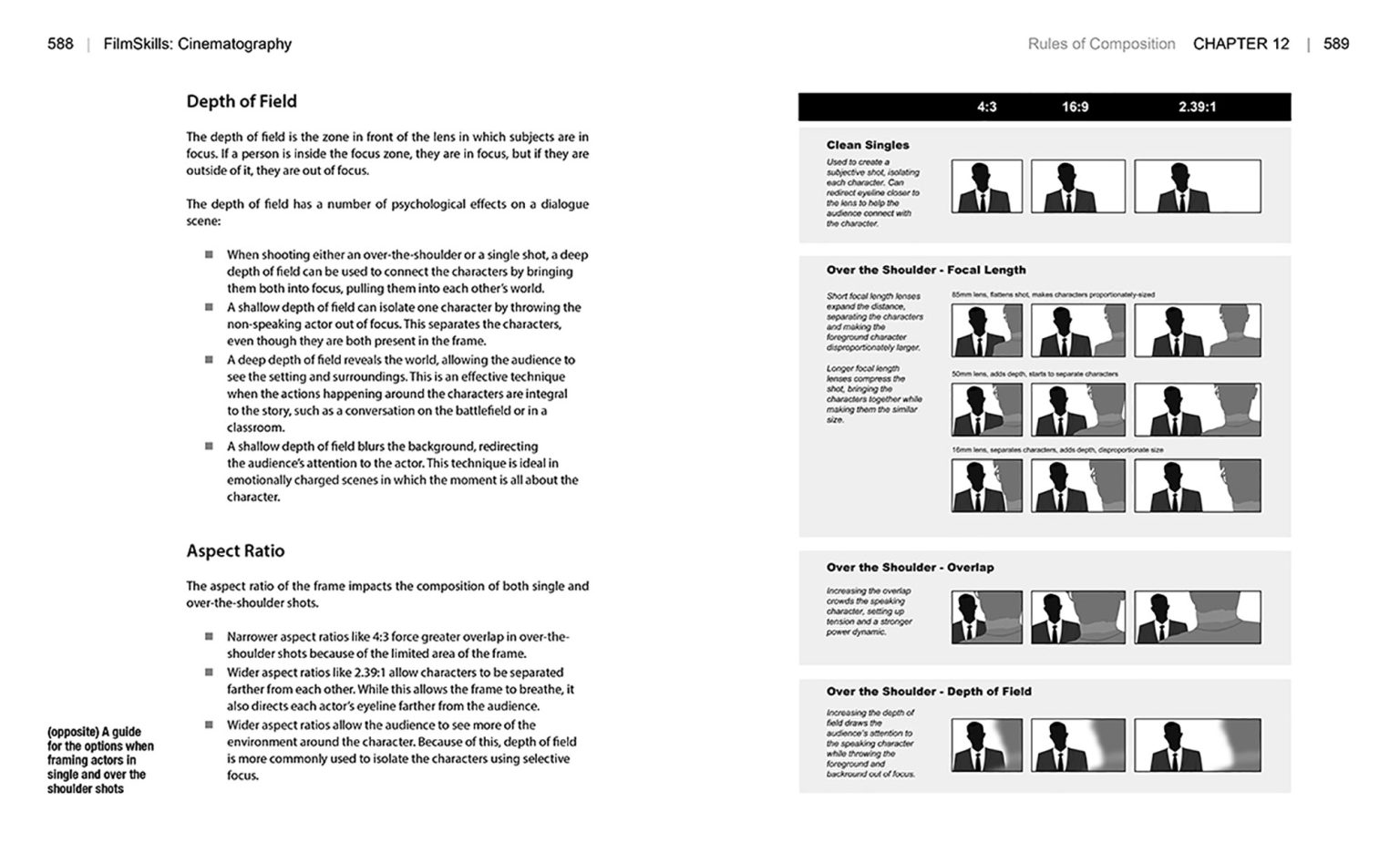
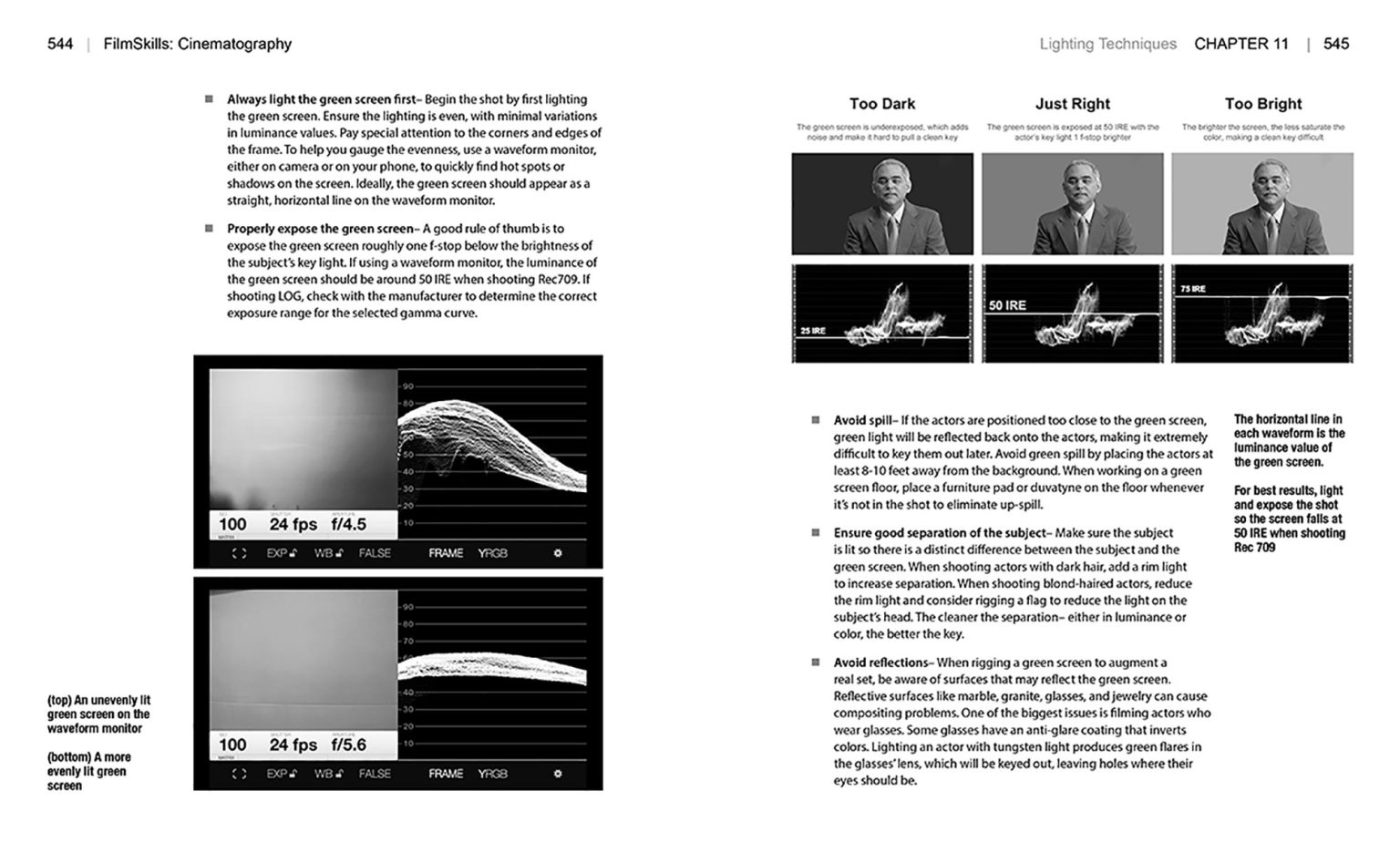
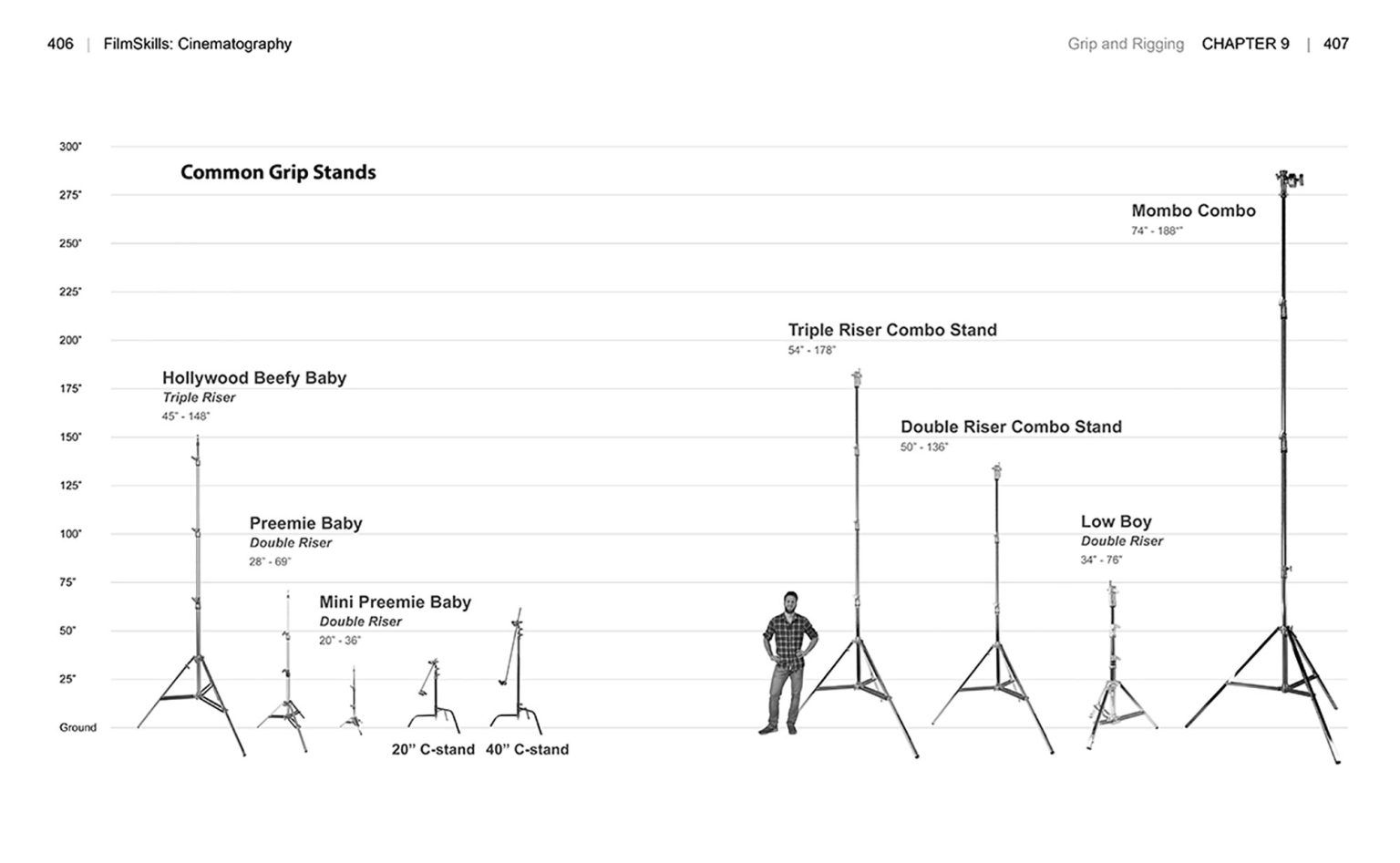
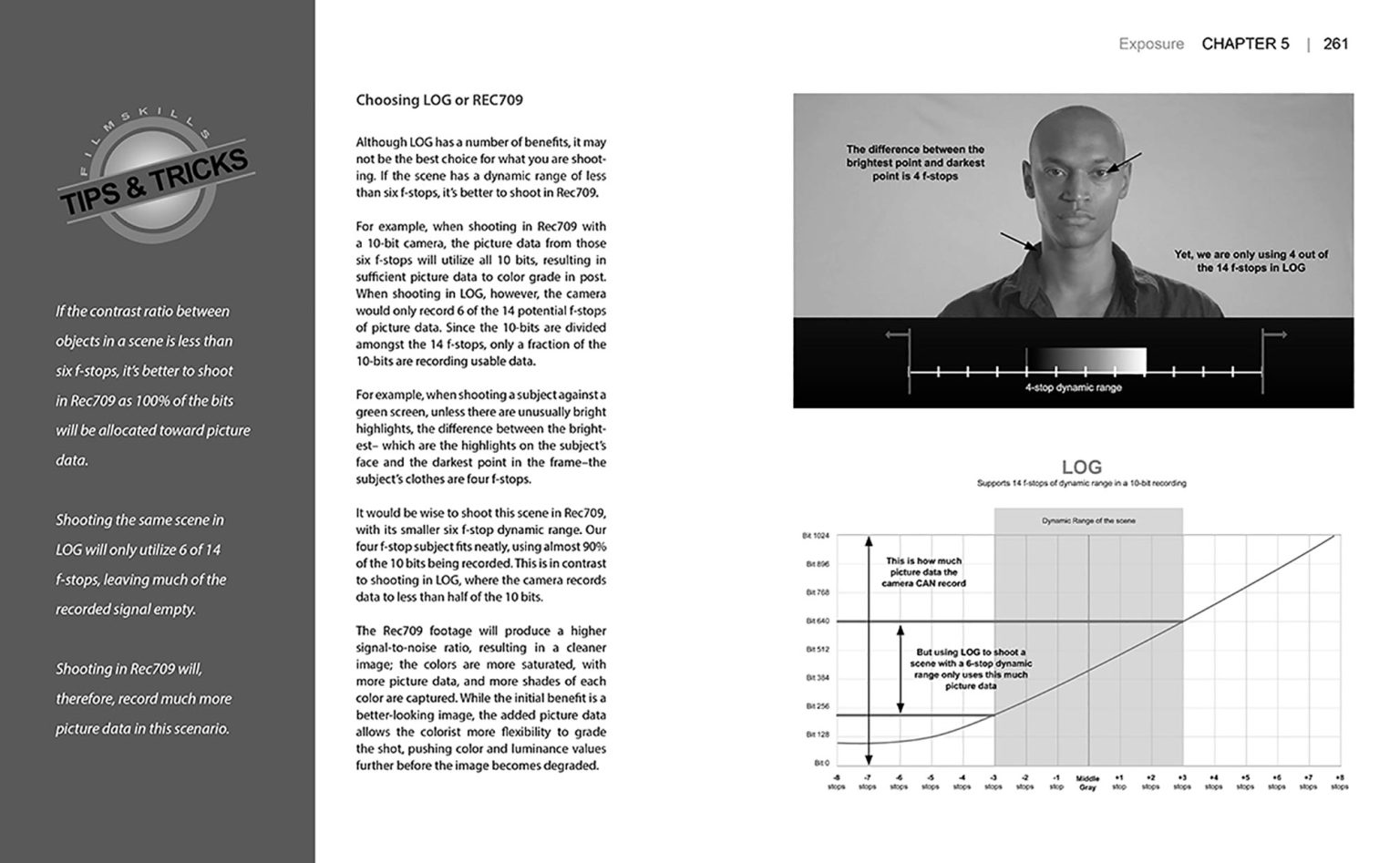
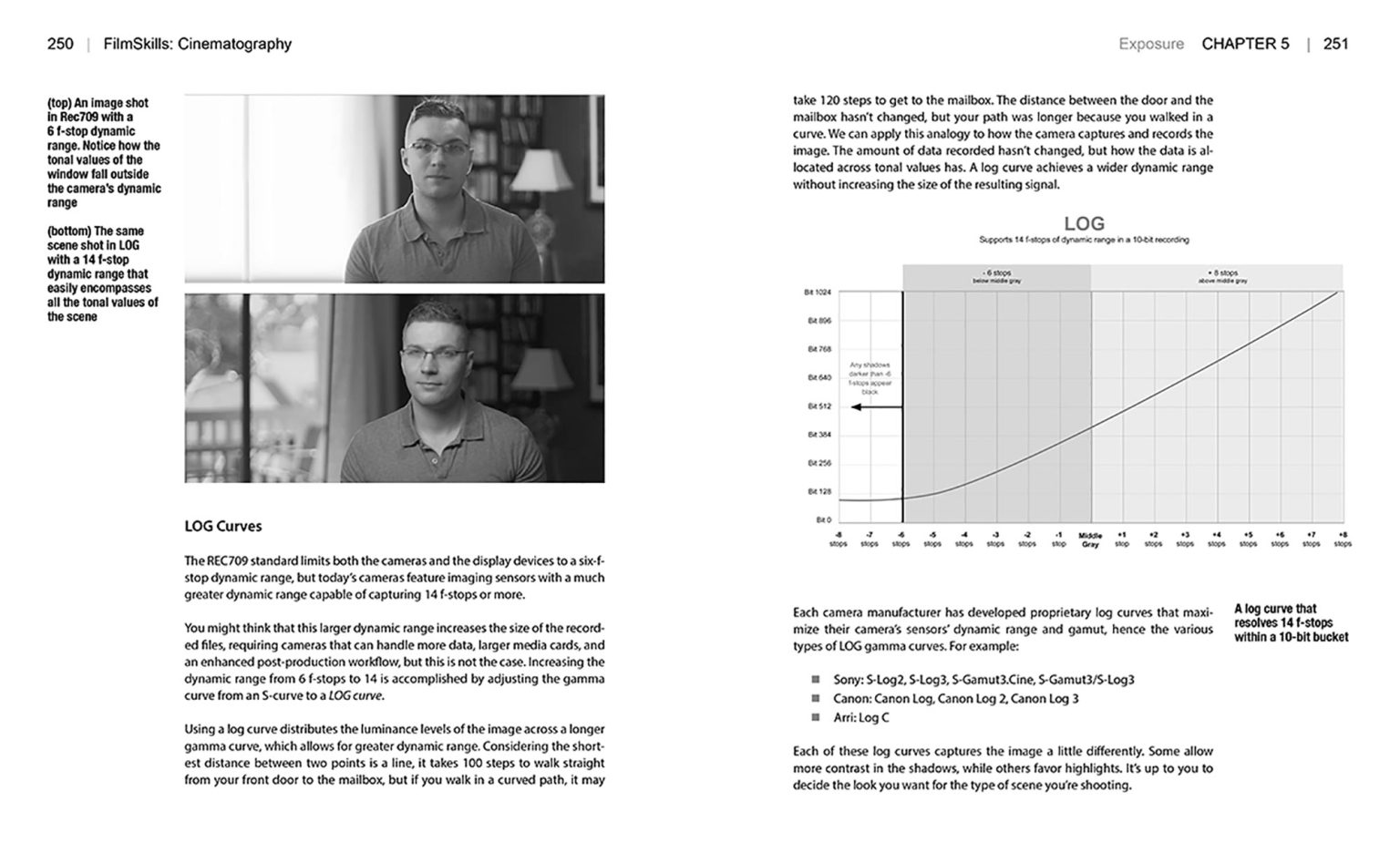
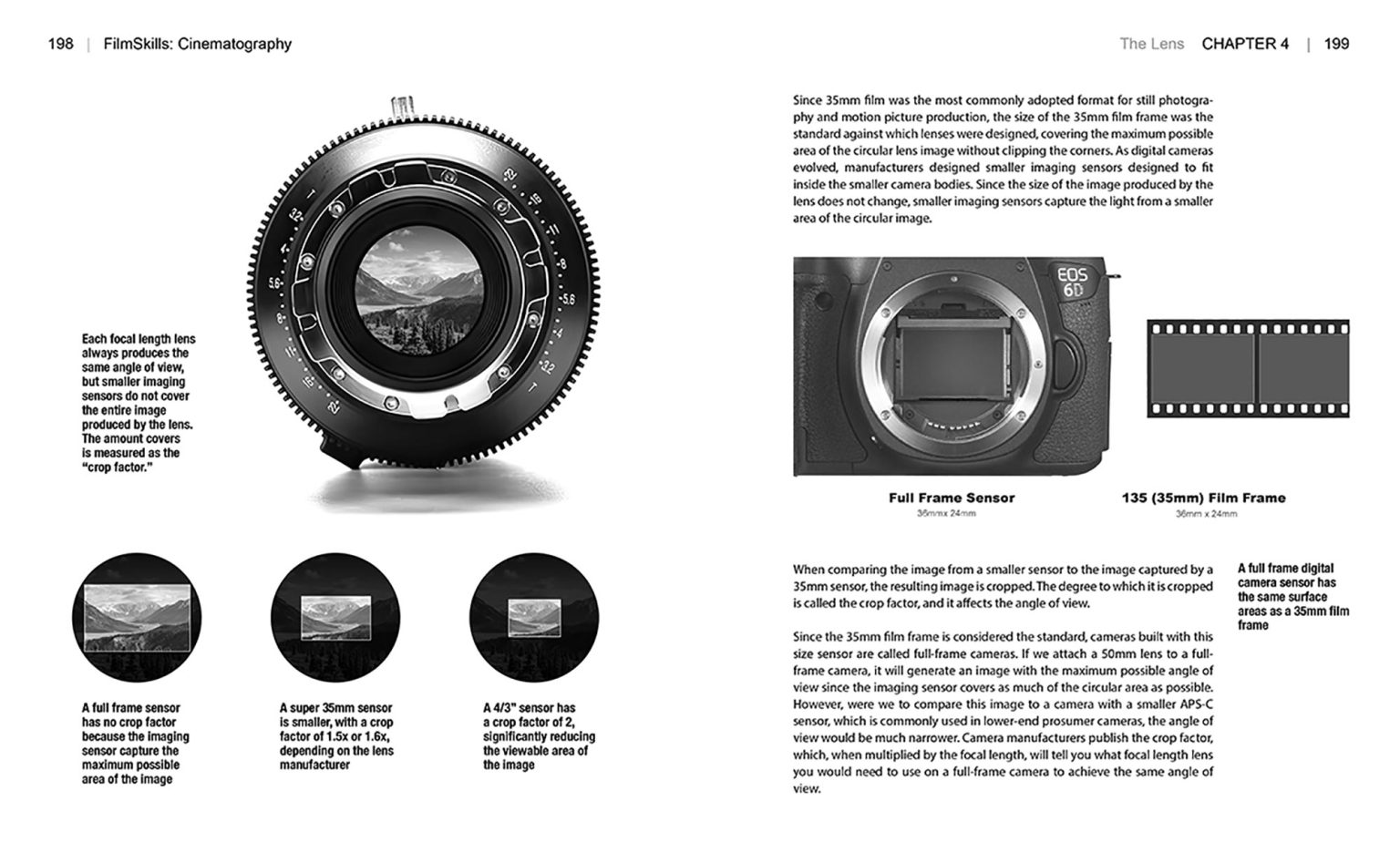
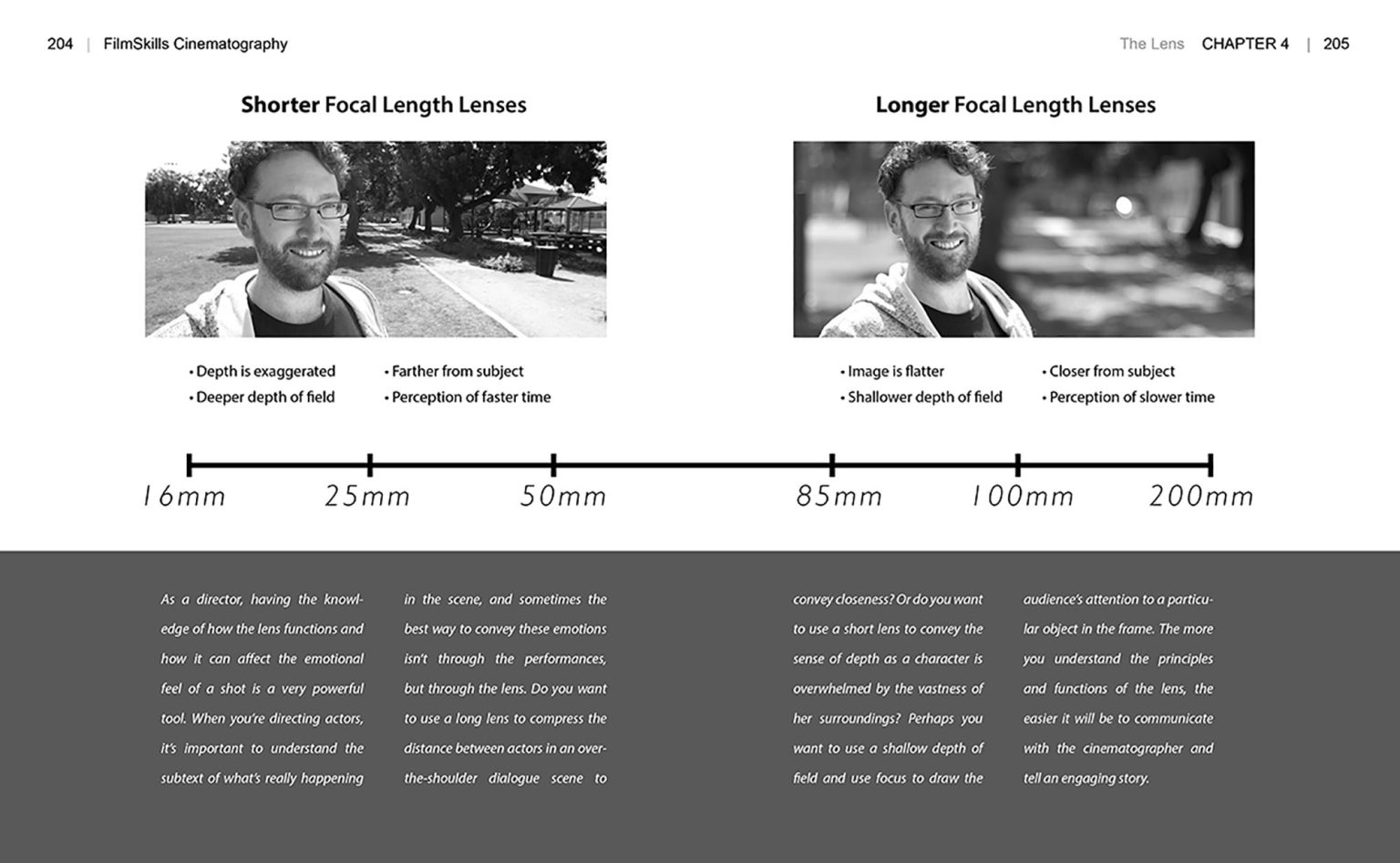
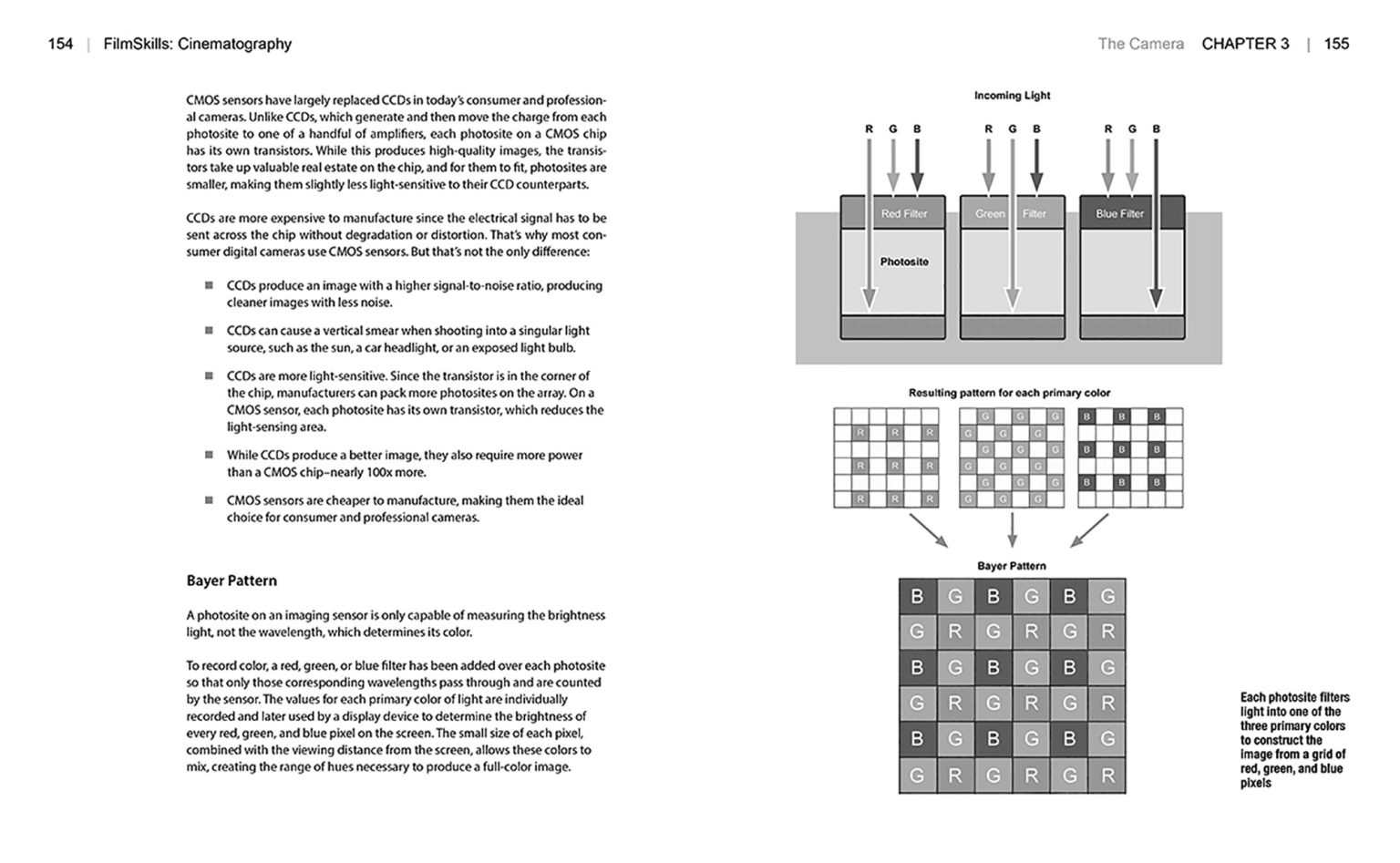
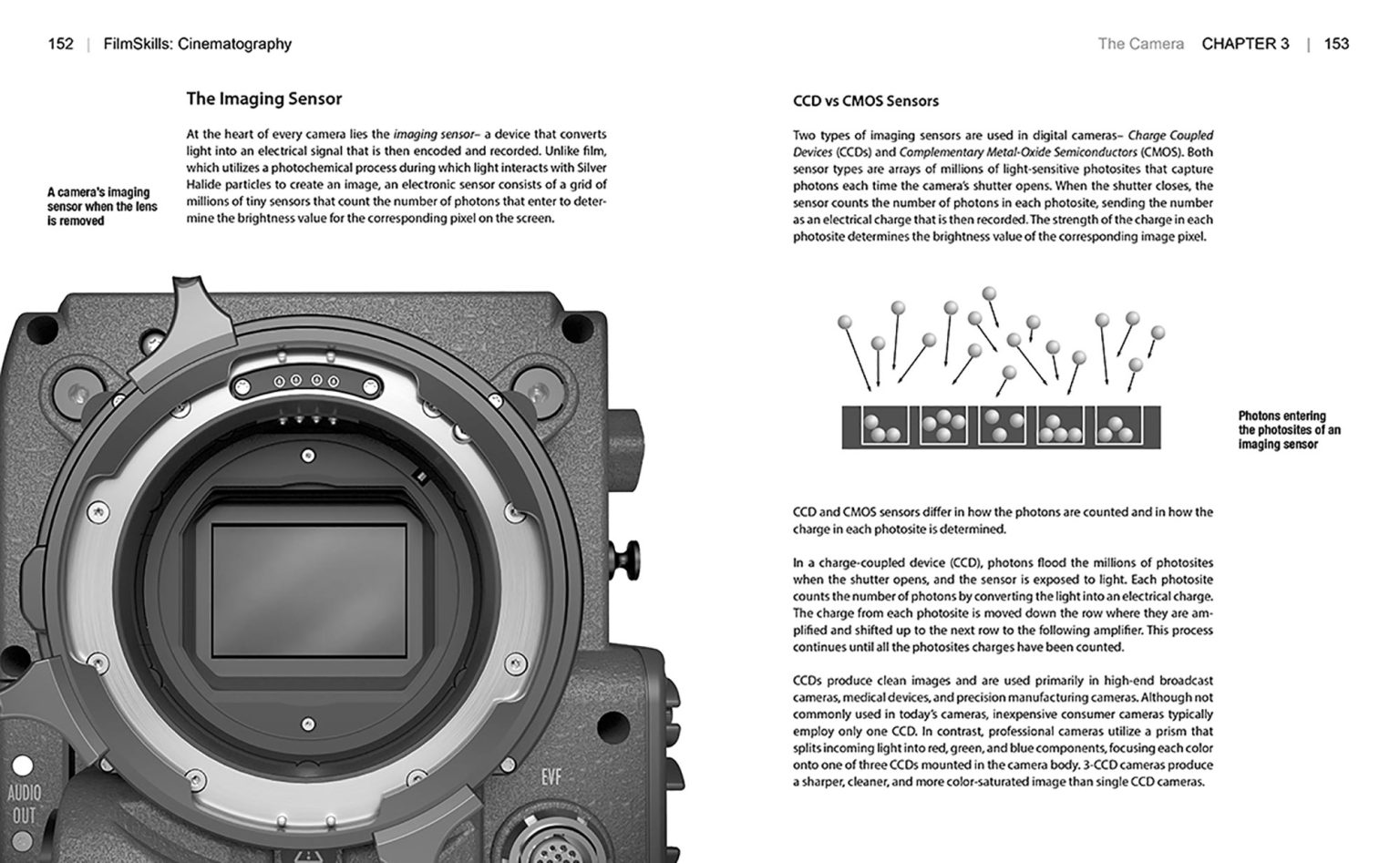
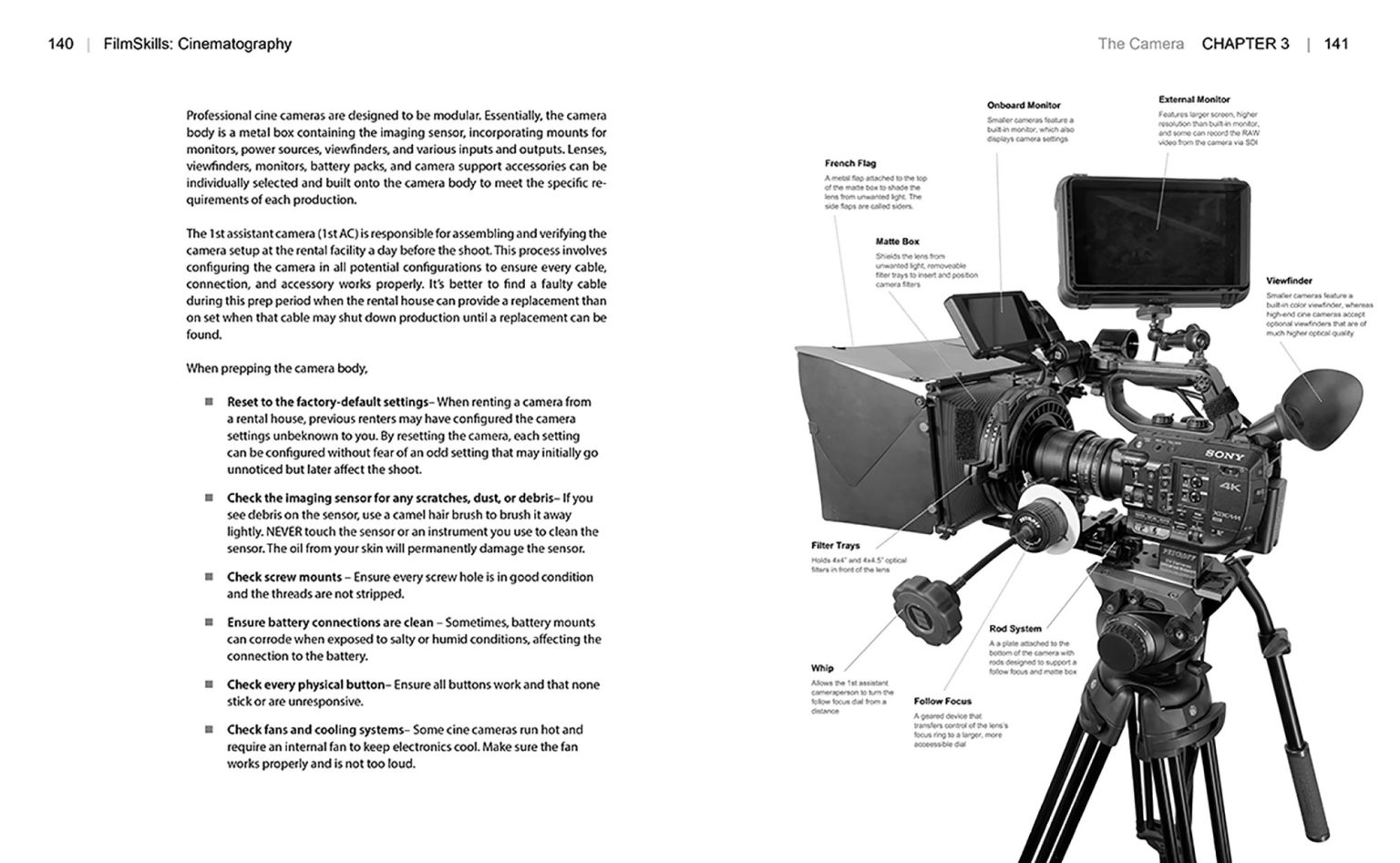
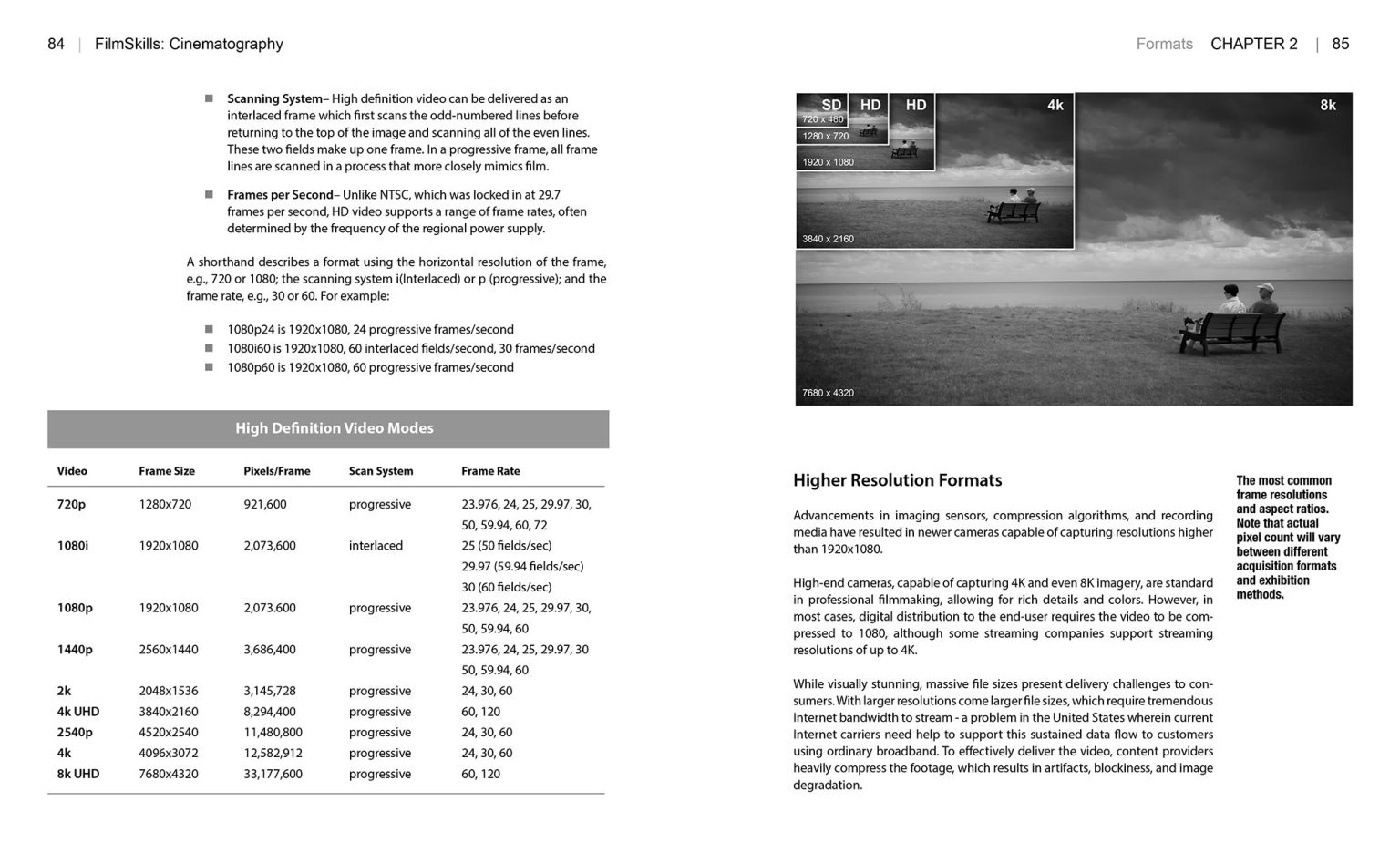
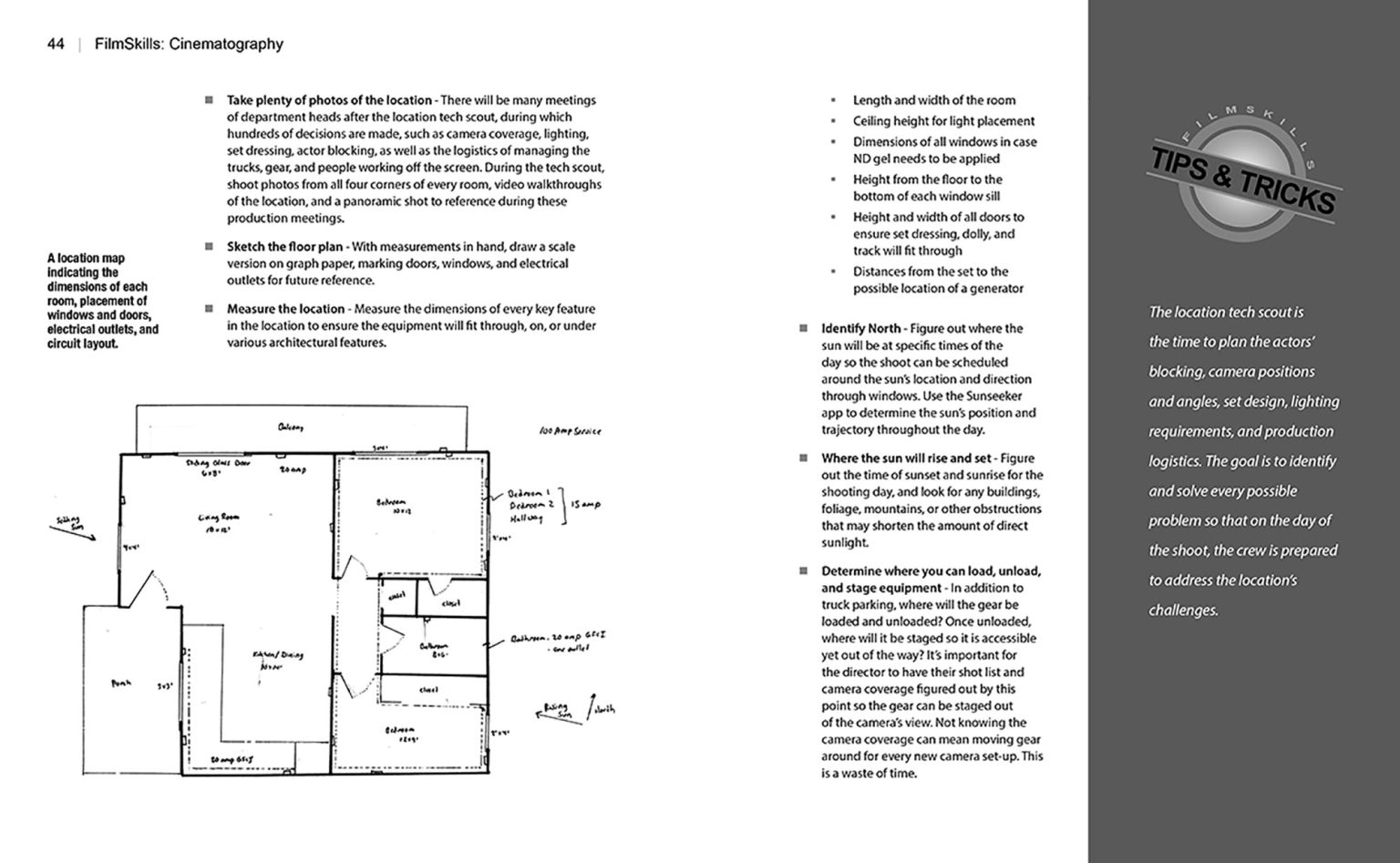
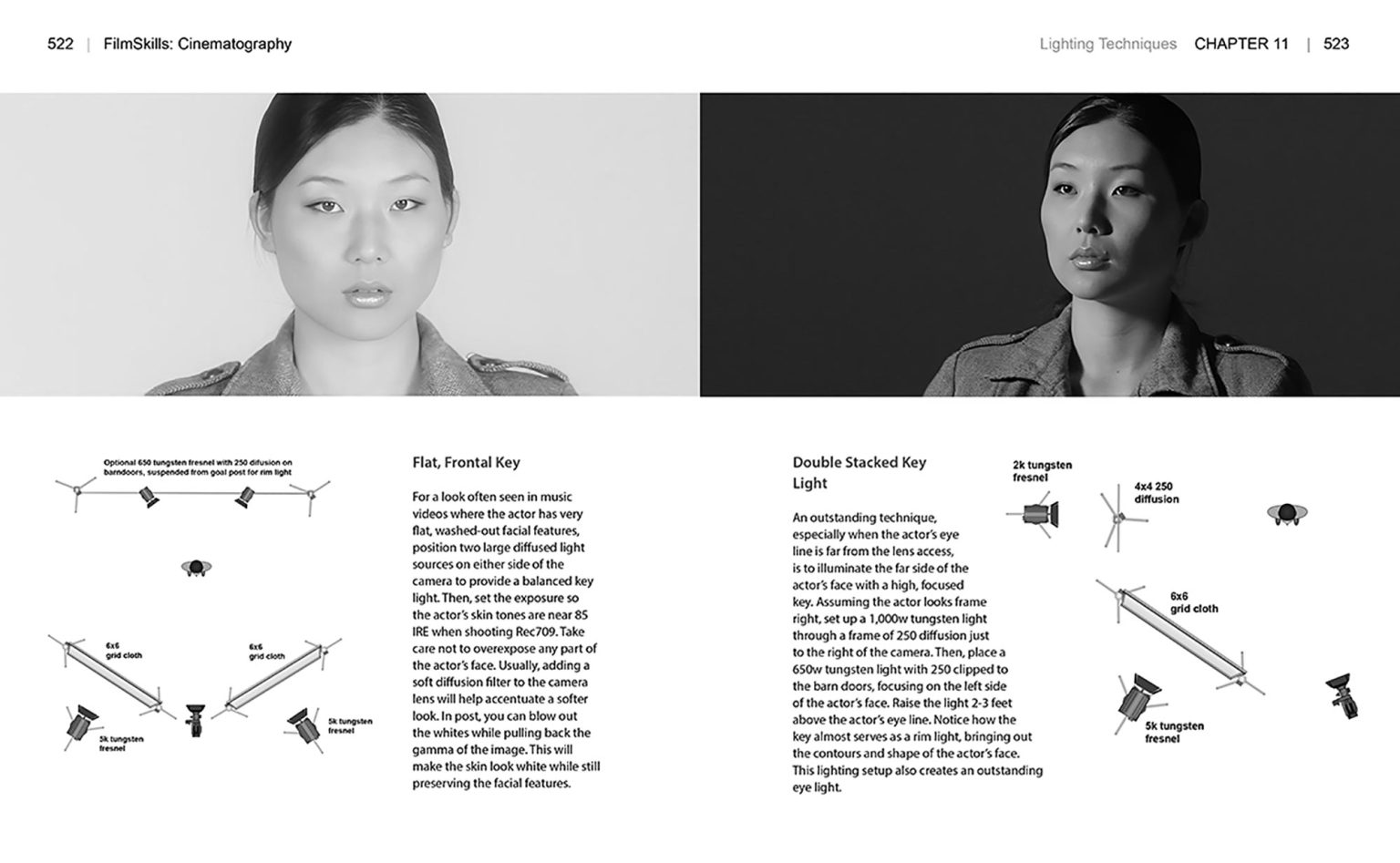
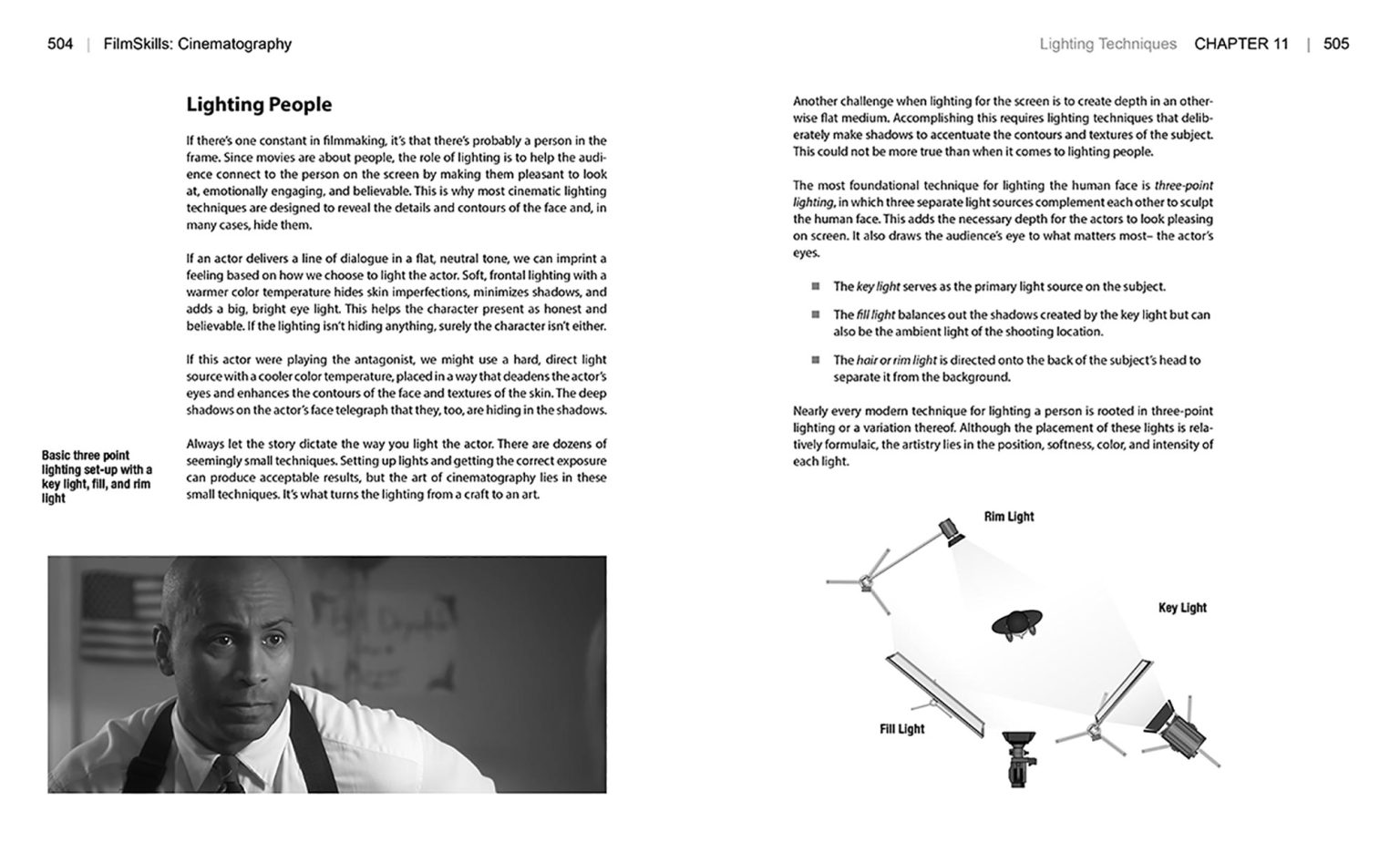
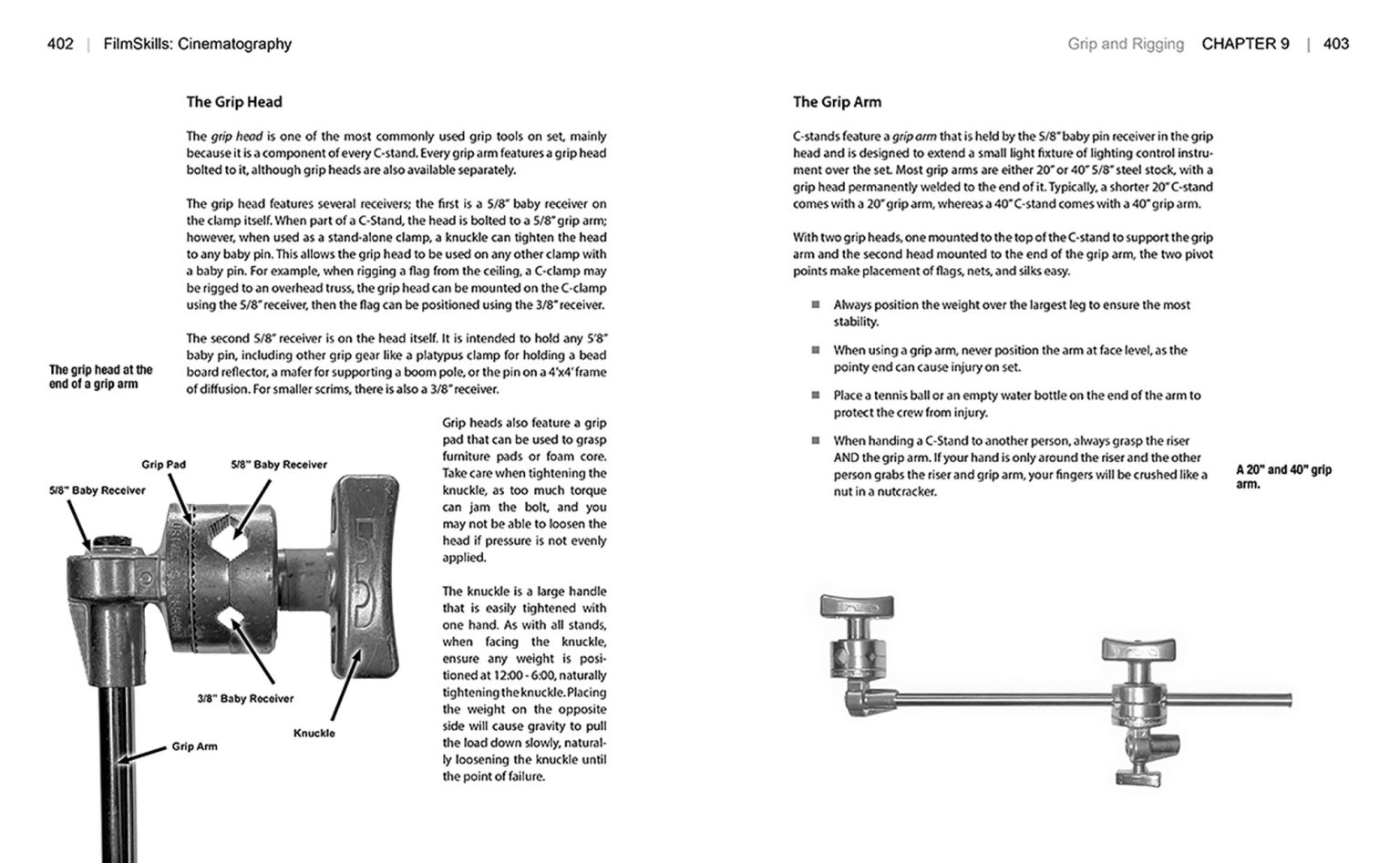
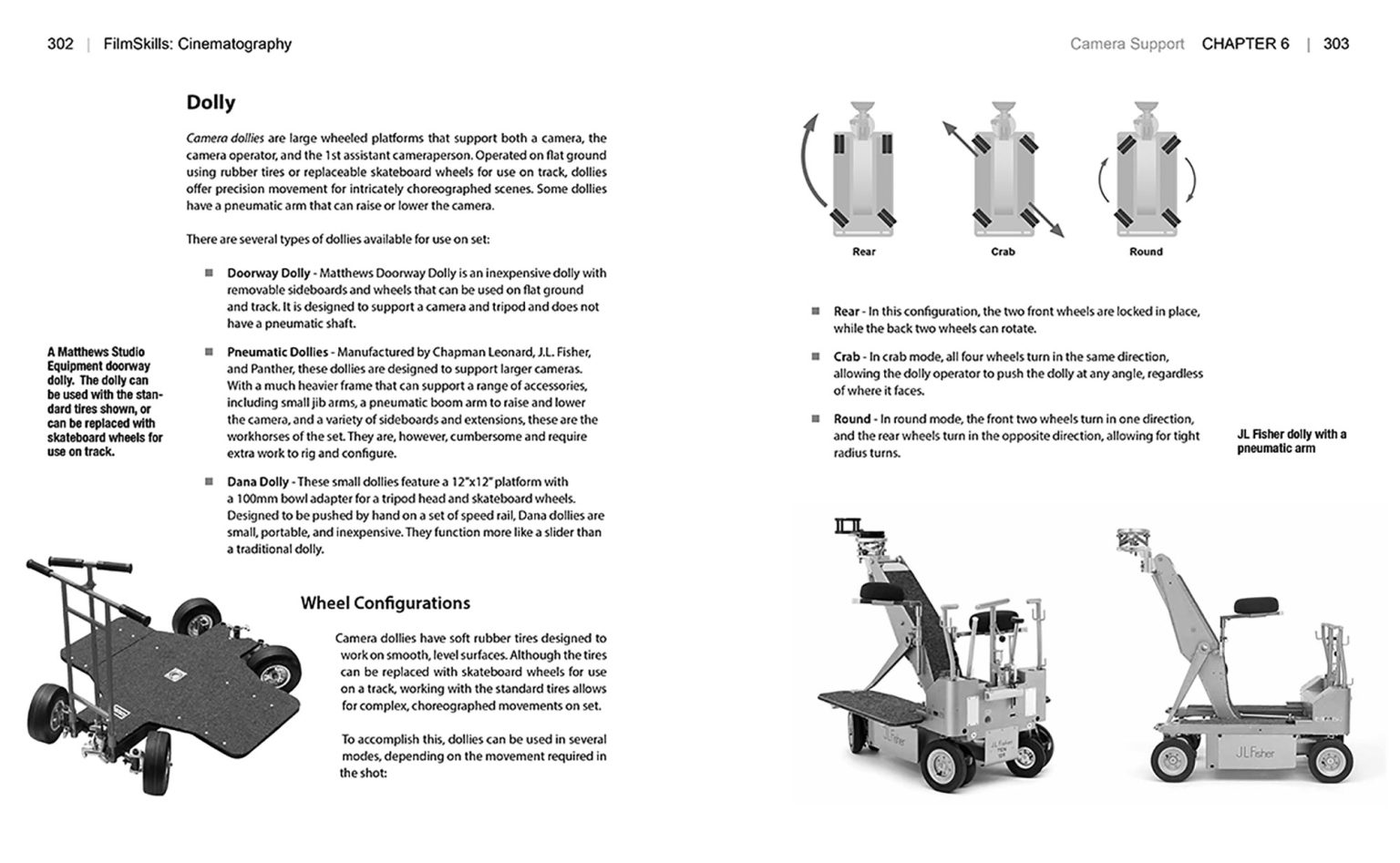
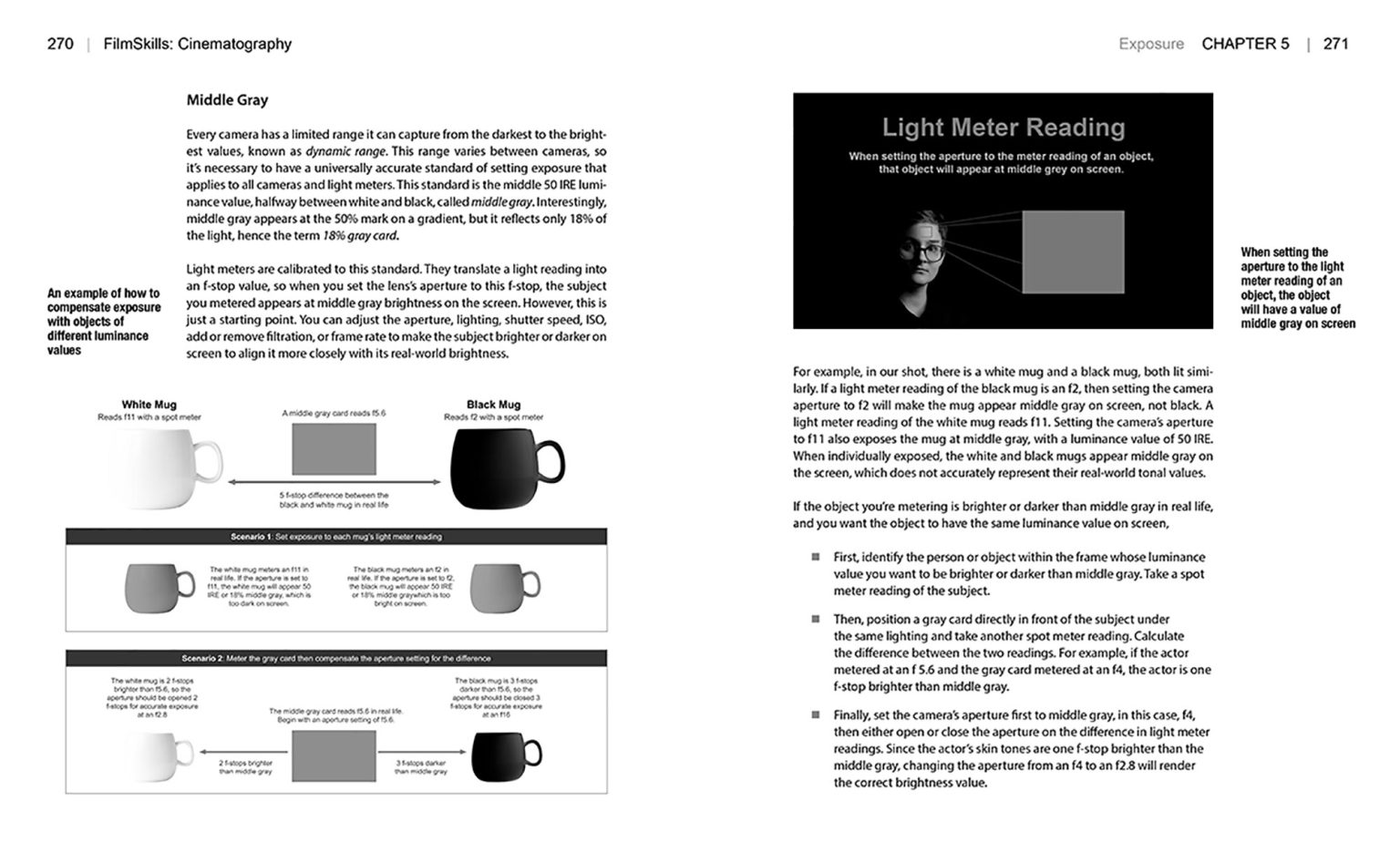
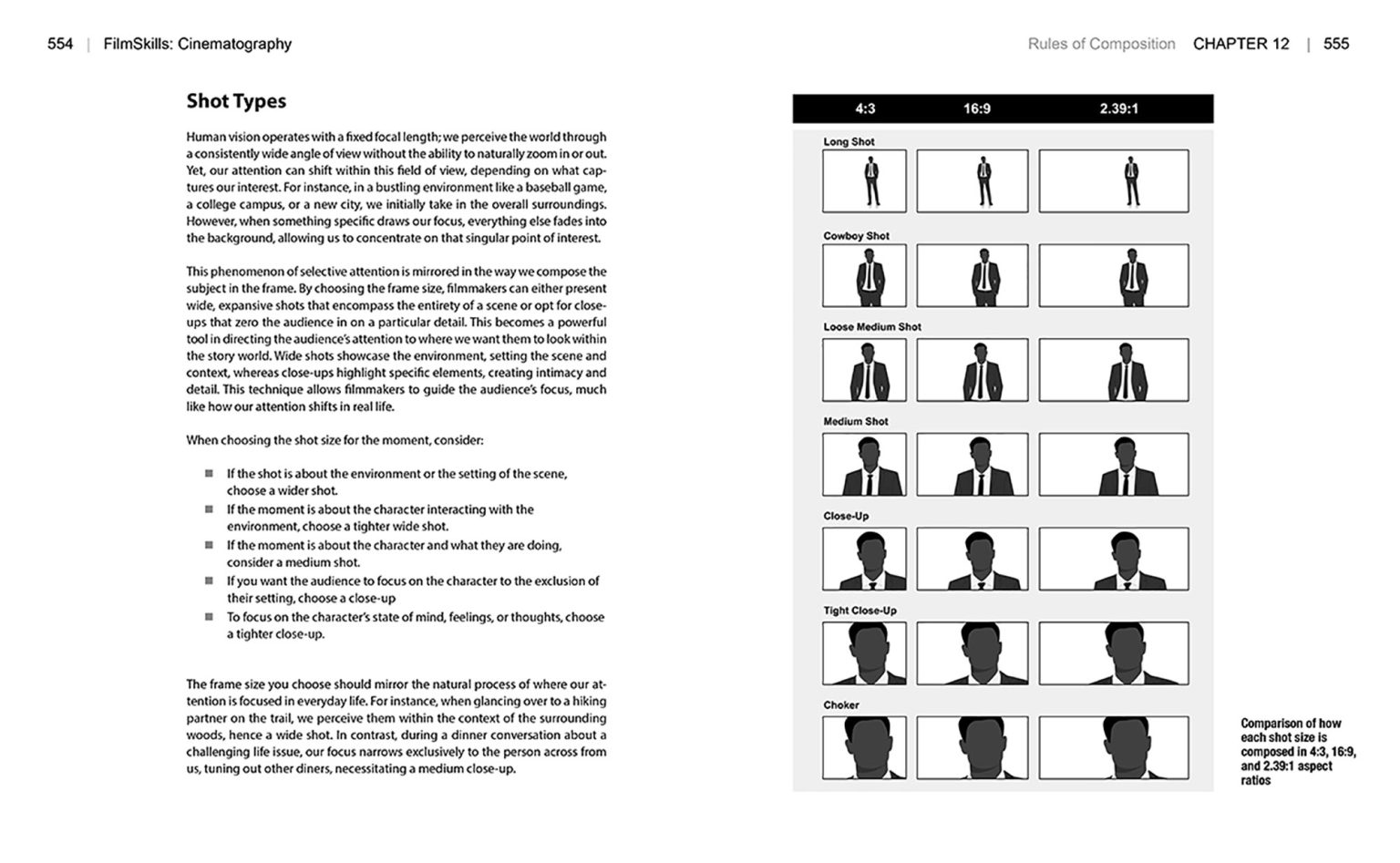
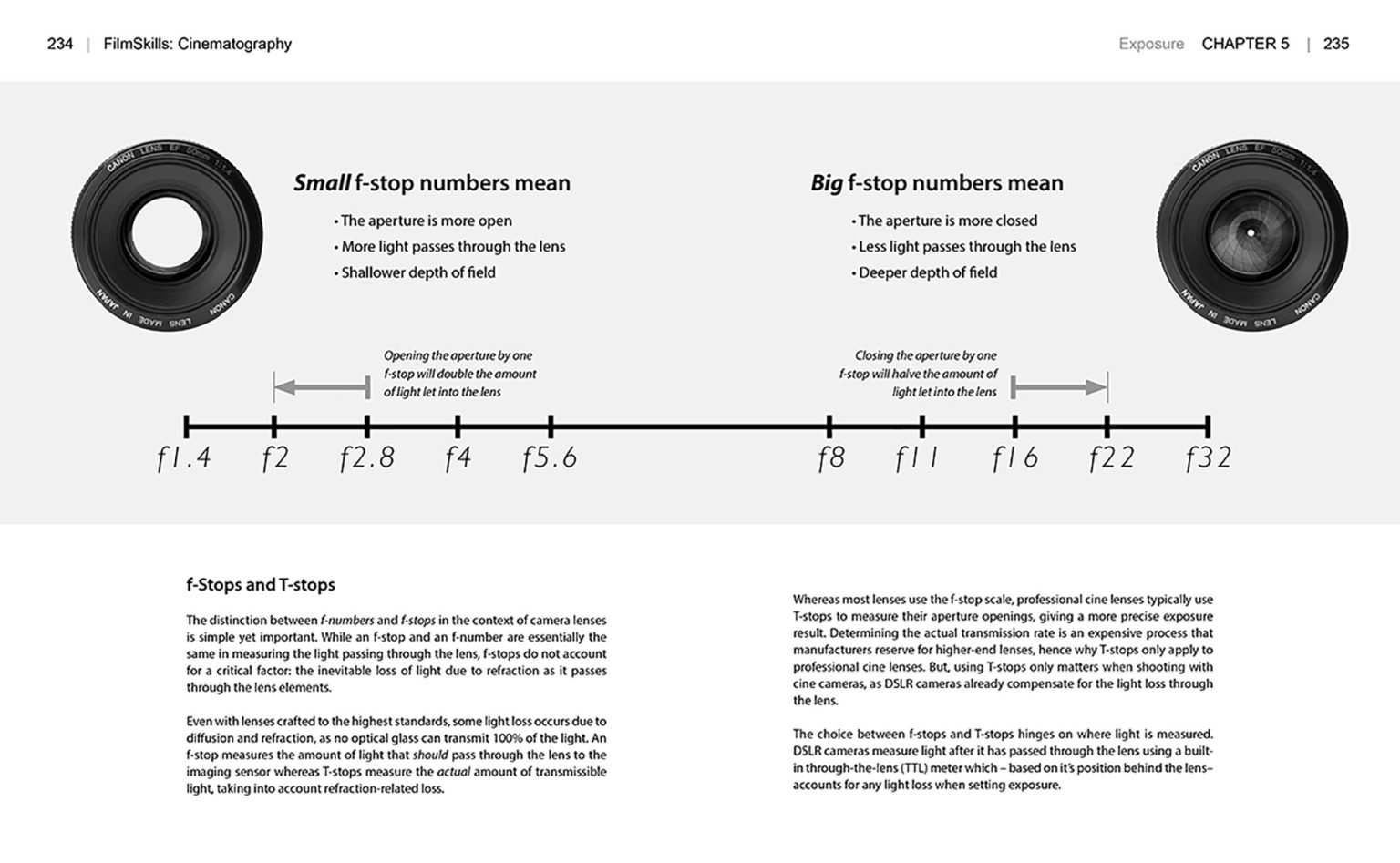
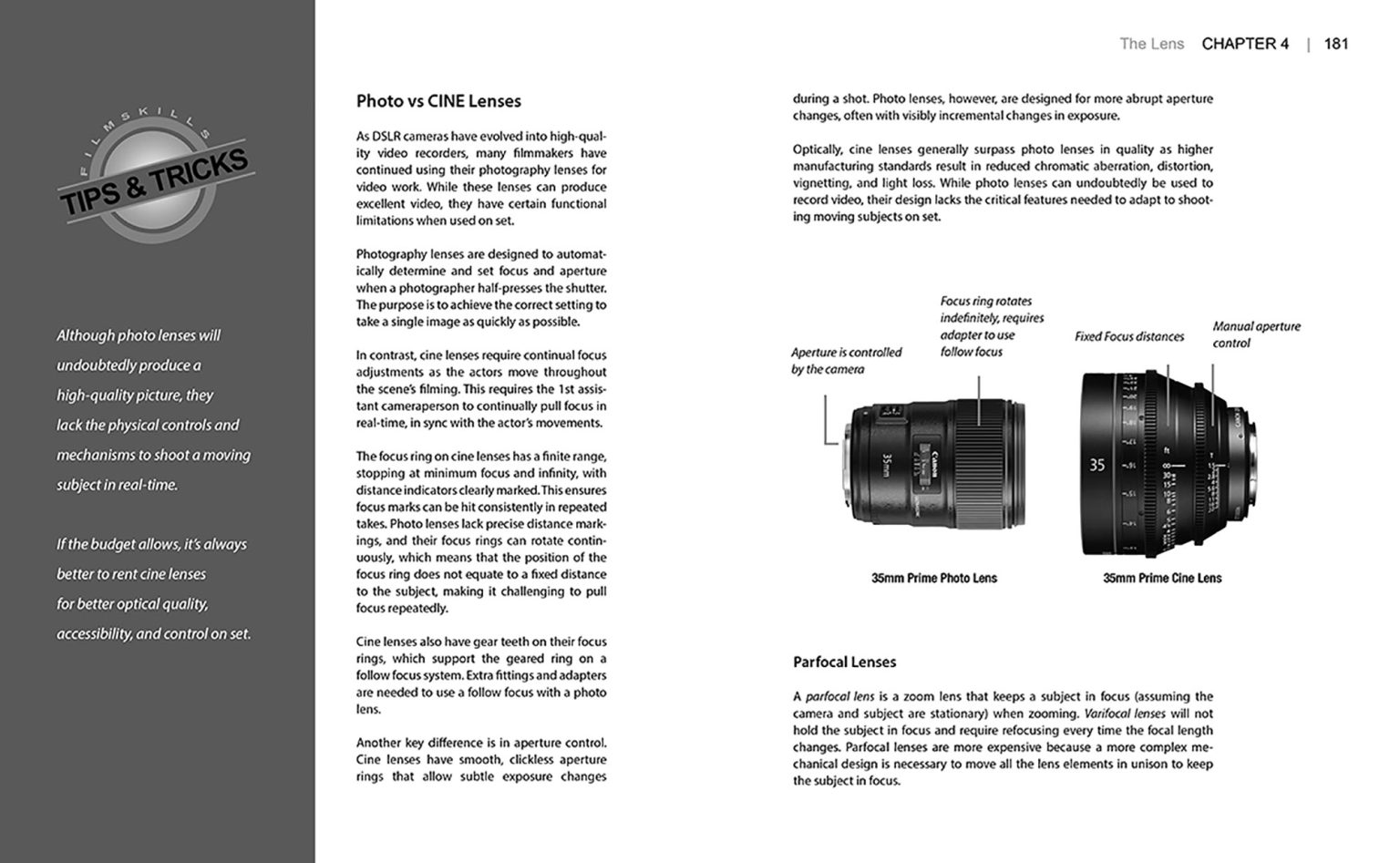

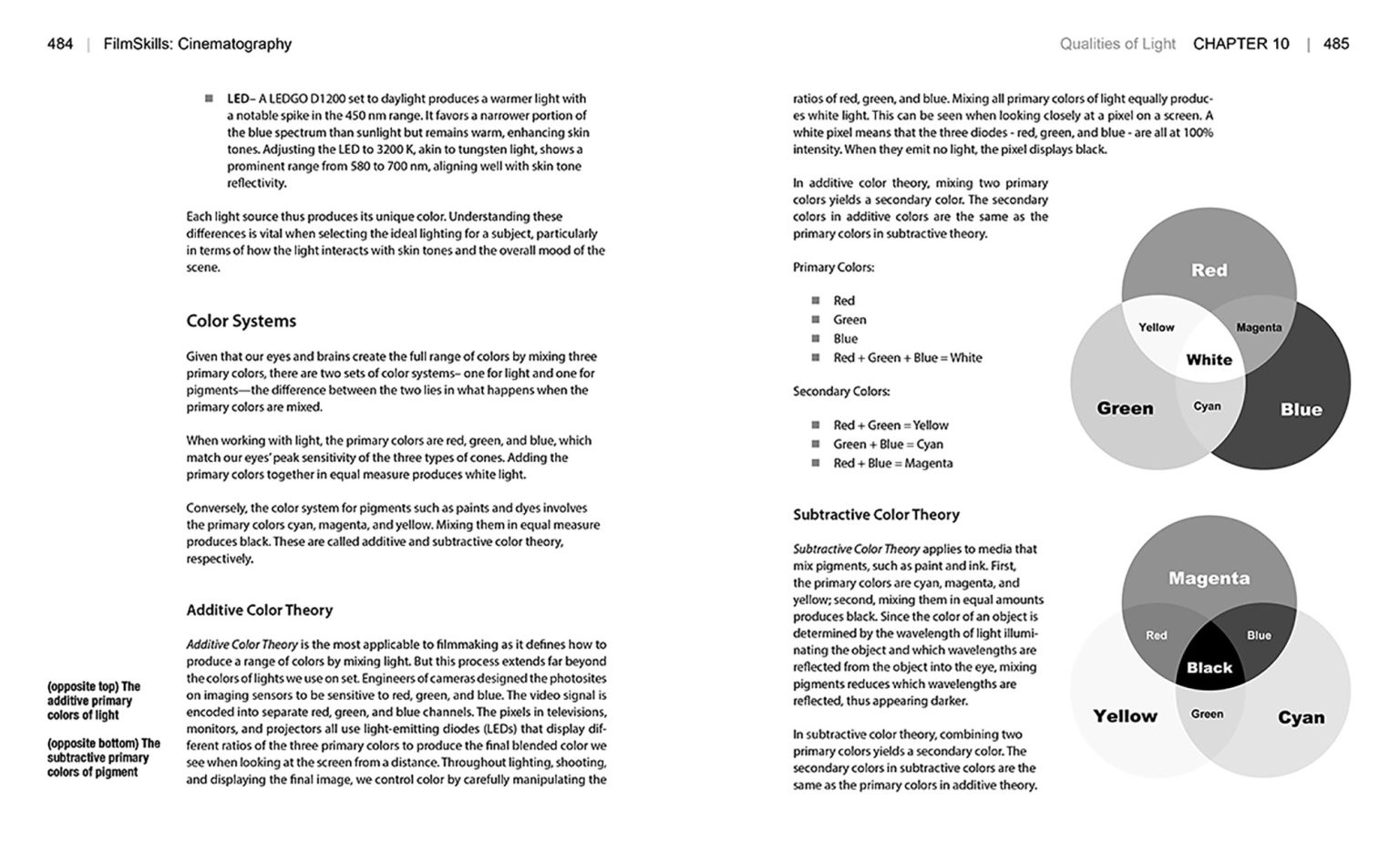
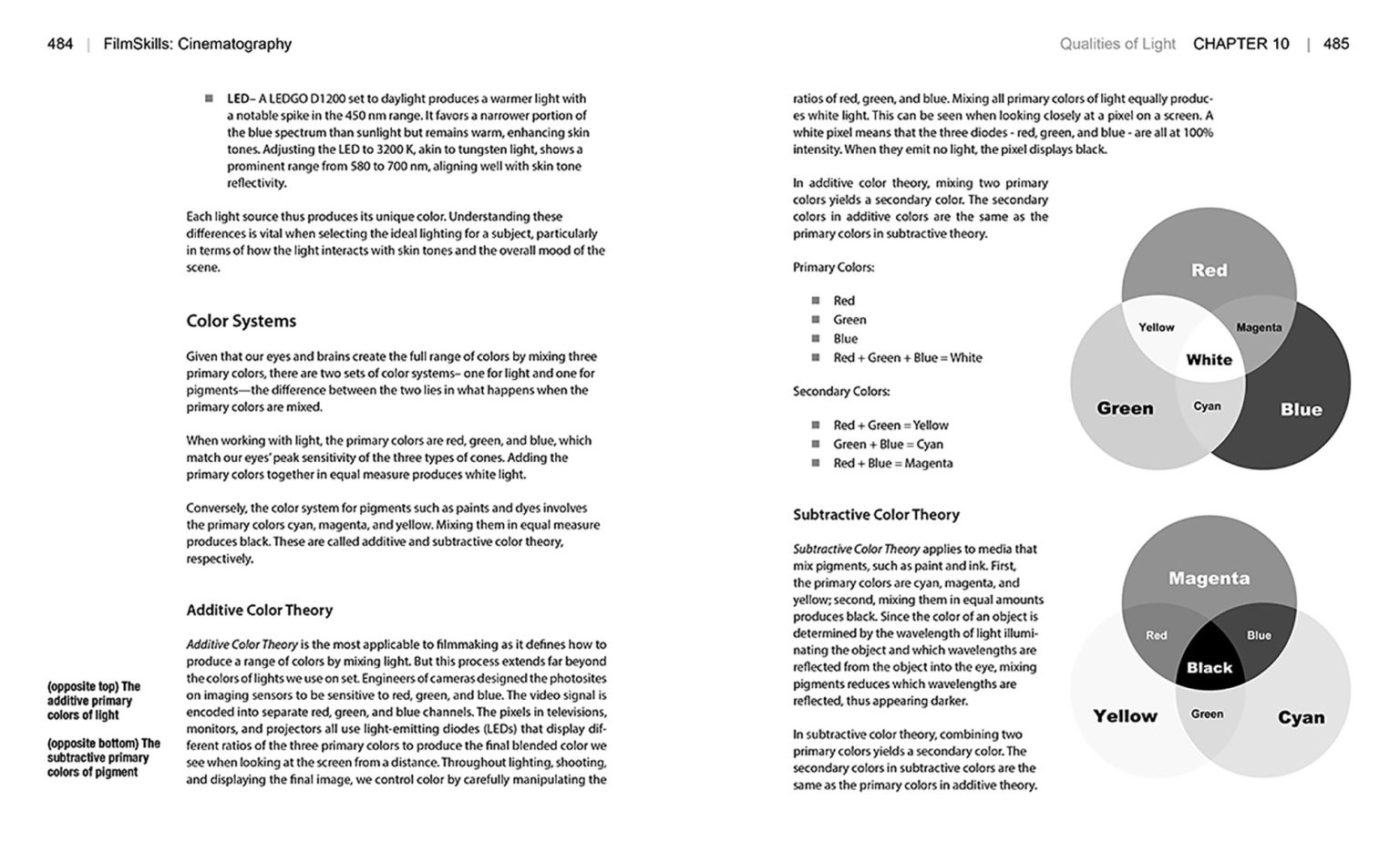
The perfect classroom companion to the FilmSkills Academic online curriculum
Chapter 1 – Cinematography
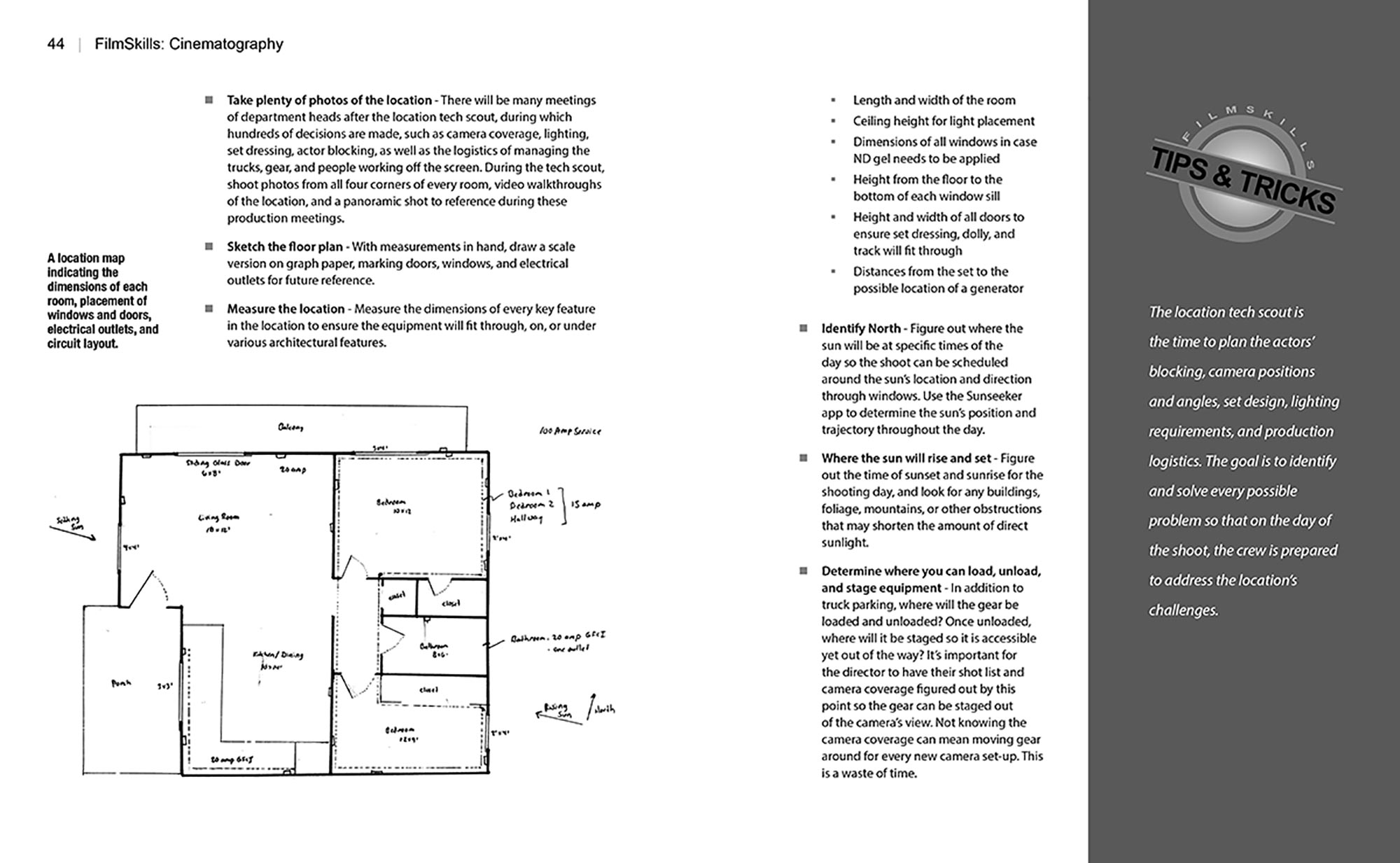
Components of Cinematography
- Camera Placement
- Lens Selection
- Movement
- Composition
- Lighting
- Exposure
Prepping a Project
- Analyzing the Script
- Discuss with the Director
- Defining Each Scene
- Determining the Cinematic Style Shooting and Delivery Requirements
- Shotlists and Pre-Visualization
- Locations
- Equipment
- Crew
- Shooting Schedule
The Crew
- The Camera Department
- Camera Operator
- 1st Assistant Camera
- 2nd Assistant Camera
- The Electric Department
- The Gaffer
- Best Boy Electric
- Electricians
- The Grip Department
- Key Grip
- Best Boy
- Grips
- Dolly Grip
Chapter 2 – Formats
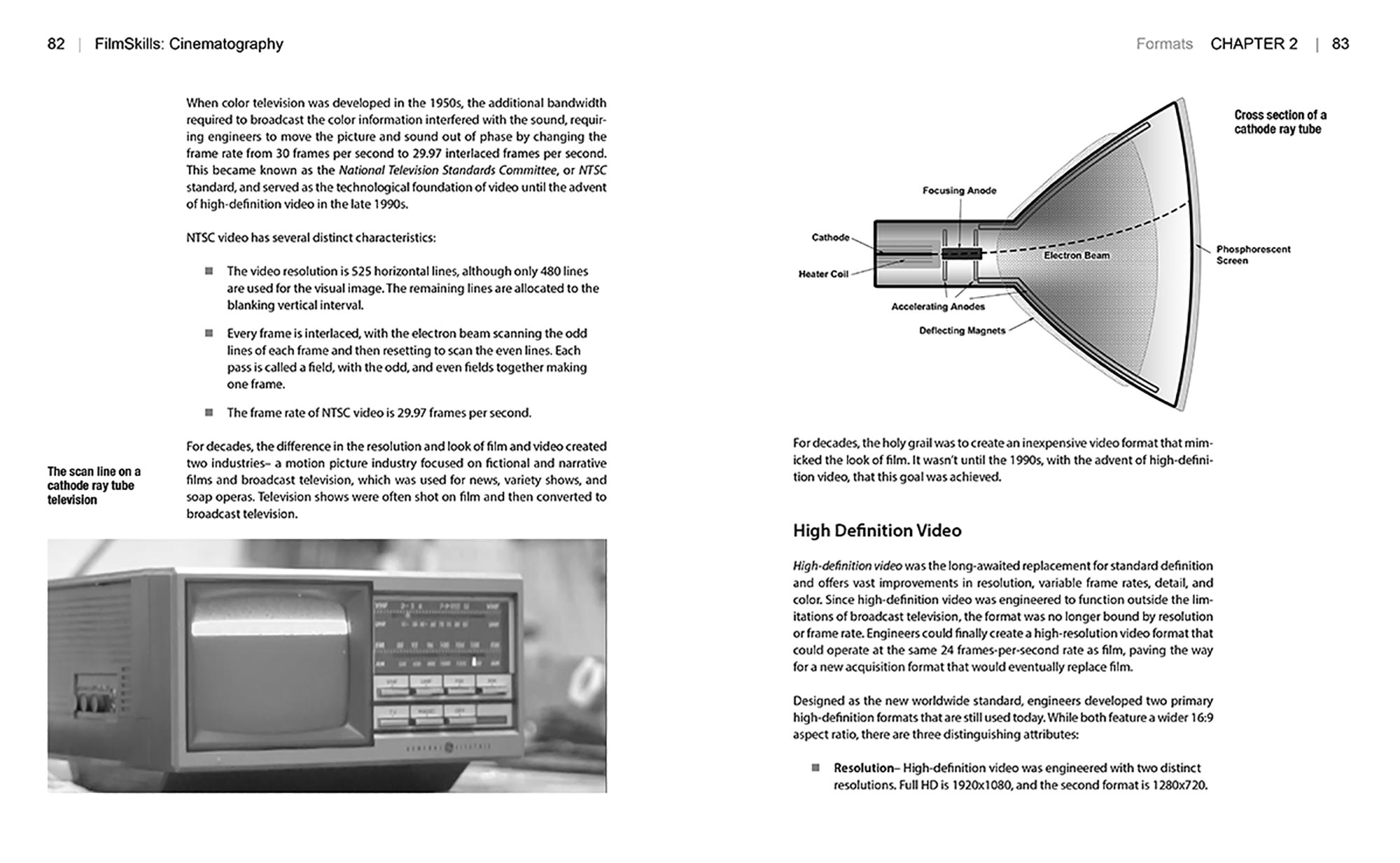
Shooting Film
- Film Formats
- 8 mm and Super 8
- 16 mm and Super 16
- 35 mm
- 70 mm
- Buying Film
- Pros and Cons of Shooting Film
Shooting Video
- Analog vs Digital
- The Analog Signal
- The Digital Signal
- The Quality of Analog vs. Digital
- Standard Definition Video
- High Definition Video
- Higher Resolution Formats
- RAW and Compression
- Bit Depth
- Color Space
- Achieving the “Film Look”
Aspect Ratios
- Film Formats and Aspect Ratios
- Converting Frame Sizes
- Letterbox
- Pillarbox
- Crop
- Pan and scan
- Squeeze
- Safe Framing
- Pixel Aspect Ratio
- Anamorphic Lenses
Frame Rate
- Persistence of Vision
- The 24 frames per second standard
- Broadcast Frame Rates
- 3:2 Pulldown
- Timecode
- Generating Timecode
- Slates
- Setting Up Time Code
- Free Run vs Record Run
- Drop Frame vs Non-Drop Frame
- Slow Motion and Time Lapse
- Choosing the Frame Rate
Chapter 3 – The Camera
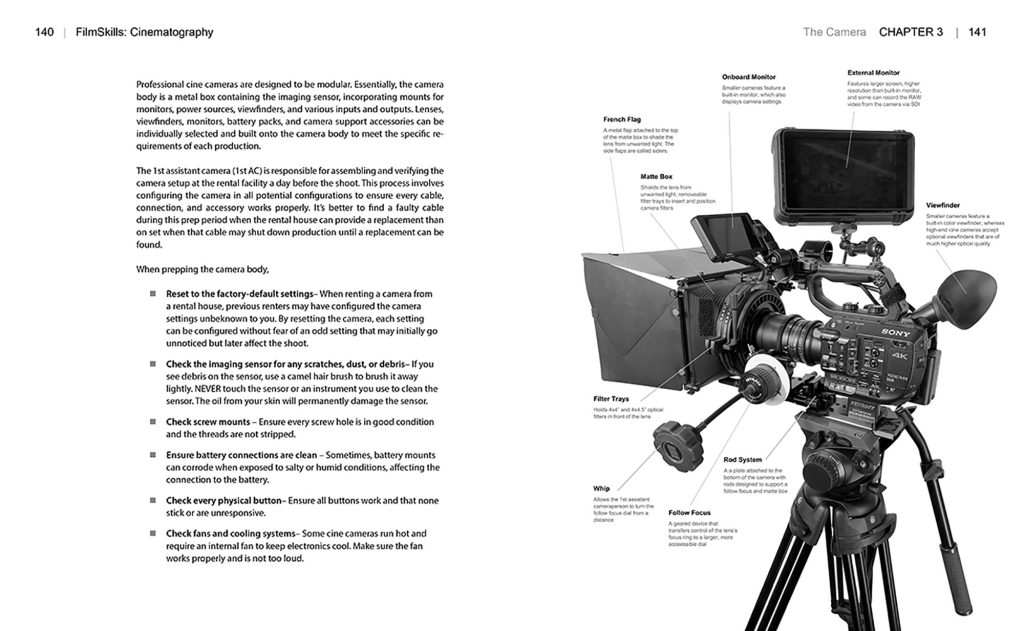
Choosing a Camera
- Cell Phone Cameras
- DSLR Cameras
- Camcorders
- CINE Camera
Parts of the Camera
- Camera Body
- Viewfinder and Monitors
- Base Plate and Rods
- Matte Box
- French Flag
- Siders
- Follow Focus
- Whips
- Filters
- Battery
- Media
- The Imaging Sensor
- CCD vs CMOS Sensors
- Bayer Pattern
- ISO
- Grouping ISO Settings
- Gain
- The Shutter
- Shutter Speeds
- Motion Blur
- Global vs Rolling Shutter
- Shutter Speed and Flicker
Chapter 4 – The Lens
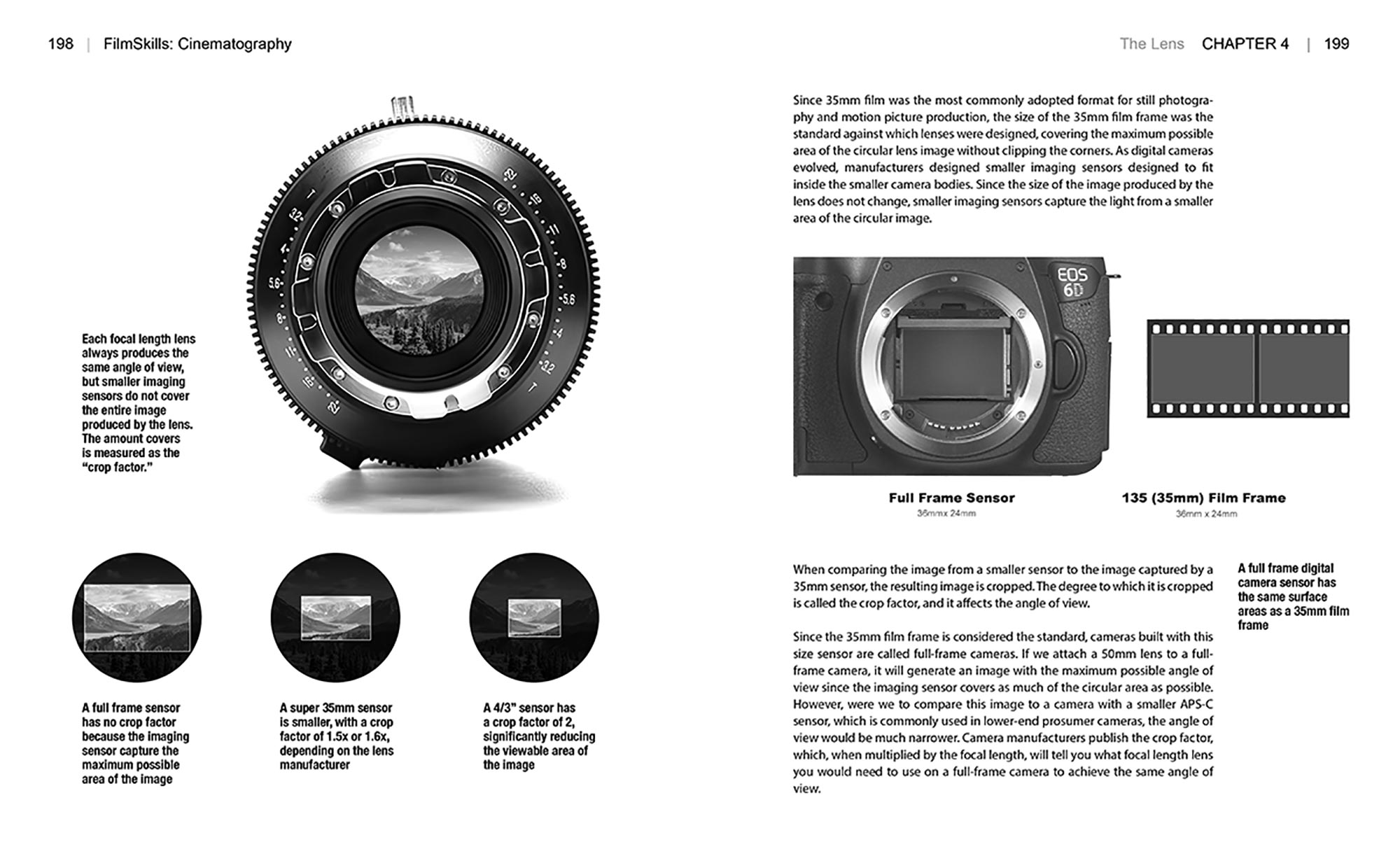
Lens Types
- Fixed vs Interchangable Lenses
- Flange Focal Distance
- Lens Mounts
- Adapters
- Fast vs Slow Lenses
- Photo vs CINE Lenses
- Parfocal Lenses
- Lens Problems
- Working with Lenses
- Transporting Lenses
- Caring for Lenses
- Swapping Lenses
- Cleaning a Lens
- How to Test a Lens
The Focal Length
- Prime Lenses vs Zoom Lenses
- Zoom Lenses
- Prime Lenses
- Angle of View
- Crop Factor
- Full Frame vs APS-C Lenses
- Depth in the Shot
- Perception of Time
- Depth of Field
- Physical Measurements
- Circle of Confusion
- The Artistic Application of Depth of Field
Focus
- Hyperfocal Distance
- Logarithmic Distance
- Working with a Follow Focus
- Pulling Focus
- Digital Focus Assist Tools
- Focus Magnification
- Peaking
- Autofocus
- Macro Focus
- Back Focus
Chapter 5 – Exposure
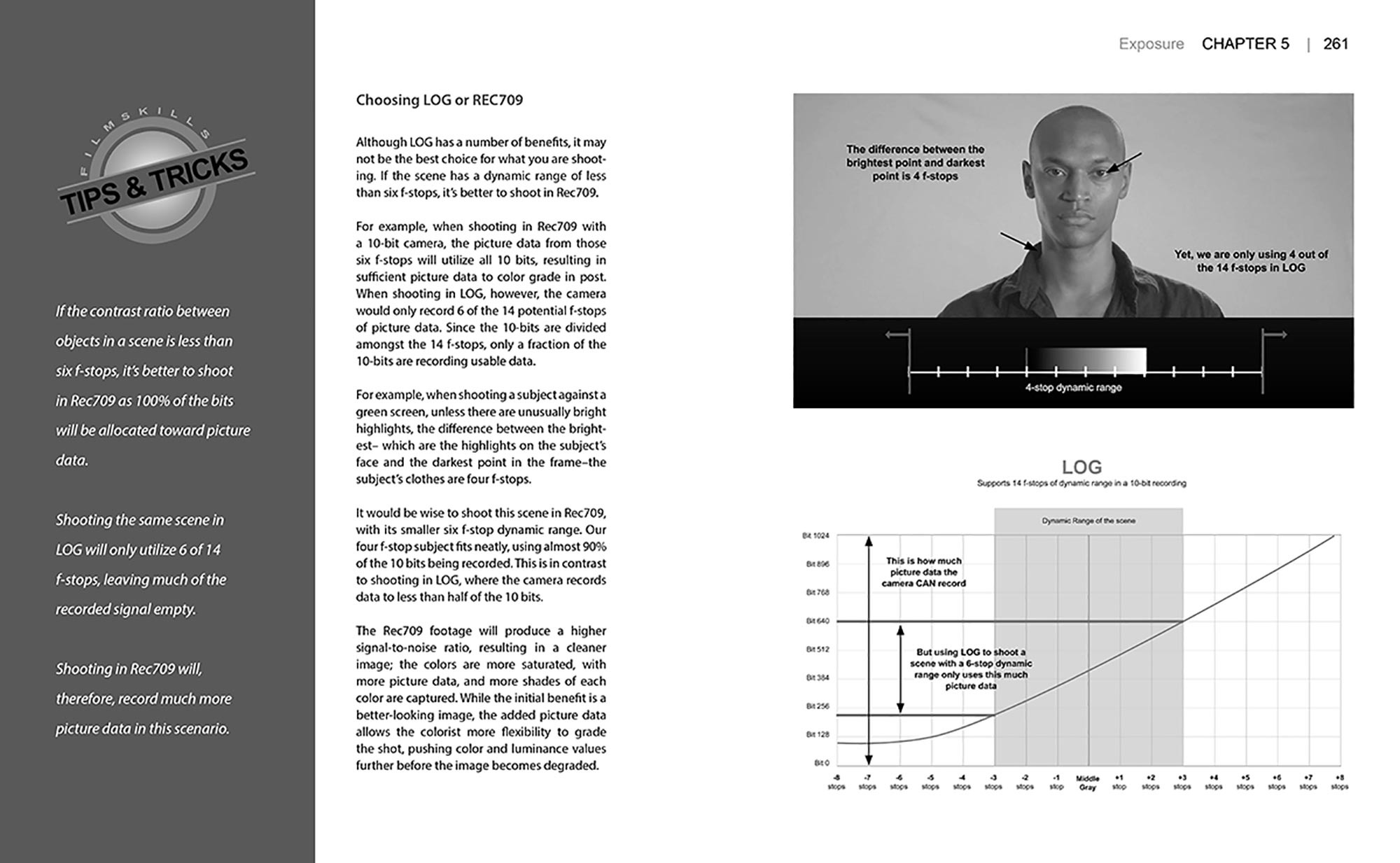
Measuring Light
- f-Stops and T-stops
- How f-stops are Calculated
- Fast vs Slow Lenses
Dynamic Range
- Contrast and Ratios
- Display Limitations
- Gamma Curves
- REC 709
- LOG Curves
Exposure Tools
- Light Meters
- Middle Gray
- Zebra Stripes
- False Color
- Histograms
- Waveform Monitor
- Super White
- Neutral Density Filters
- Color Shift
- Types of ND filters
- Polarizers
- Linear vs Circular Polarizers
The Six Elements of Exposure
- Light
- Aperture
- ISO
- Frame Rate
- Shutter Speed
- Filtration
Chapter 6 – Camera Support
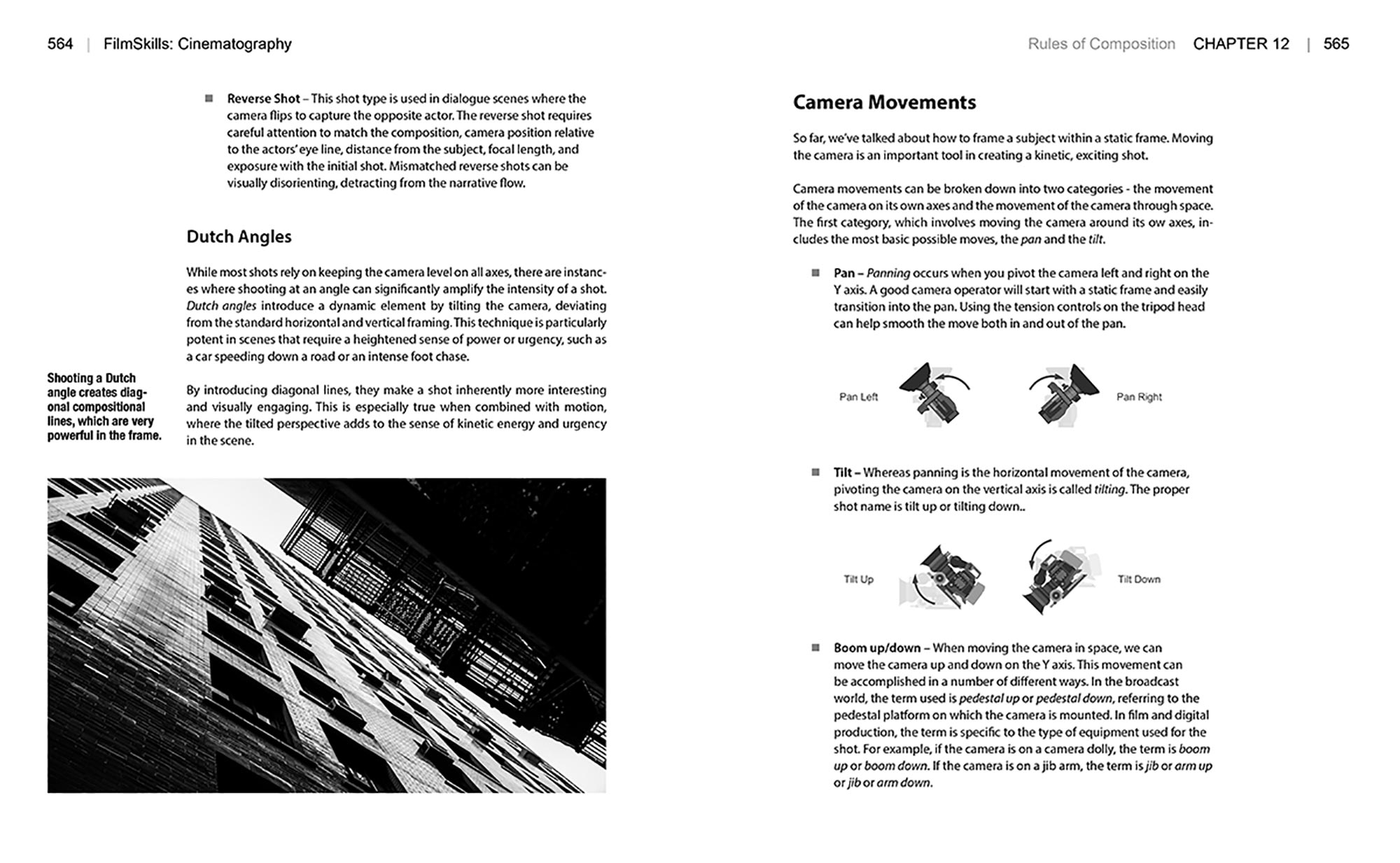
Tripods
- Head
- Legs
- Spreader
- Quick Release Plate
- Handle
- Tripod Operating Tips
- Setting Up a Tripod
- Using a Tripod
- Transporting Tripods
Dolly
- Wheel Configurations
- Operating the Dolly
- Working with Track
- Setting Up Track
- Dolly Operator Techniques
Cranes and Jib Arms
Steadicams
Gimbals
Drones
Chapter 7 – Lighting Equipment
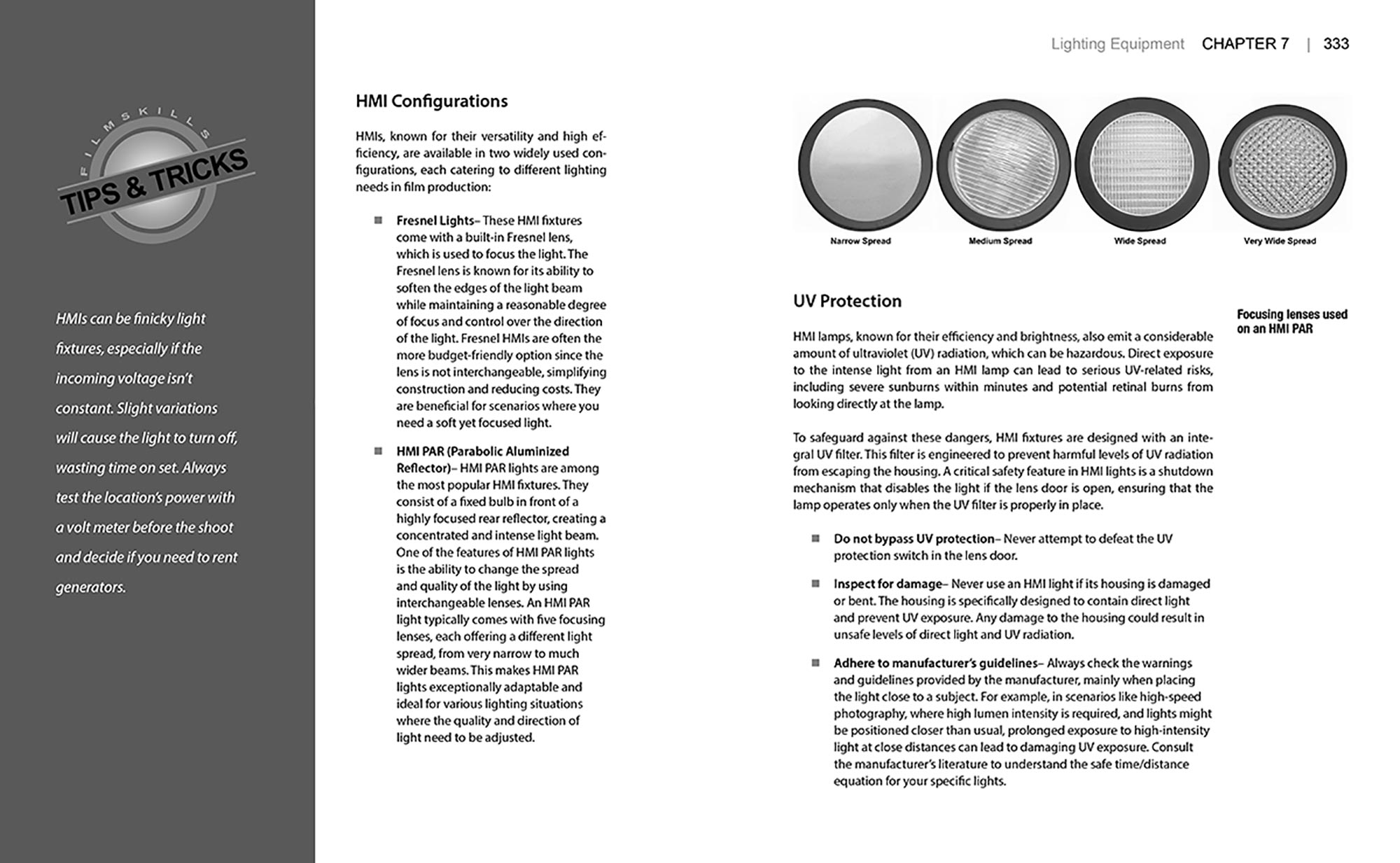
Types of Lights
Tungsten Lighting
Fluorescent Lighting
LED Lighting
- Power Consumption
- Color of Light
- Configurations
- Precautions
HMI Lighting
- HMI Ballasts
- HMI Configurations
- UV Protection
- HMI Lamp Care
- Power Supplies
Low Budget Lighting
- Construction Work Lights
- Clamp Lights
- China Balls
Lighting Safety
- On Set Organization
- Securing Light Stands
- Protecting your Hands
- Electrical Shock
- Lens or Lamp Breakage
- Replacing the Lamp
- Fire Safety
- Cords and Cables
- Lighting Equipment On Location
Chapter 8 – Lighting Control
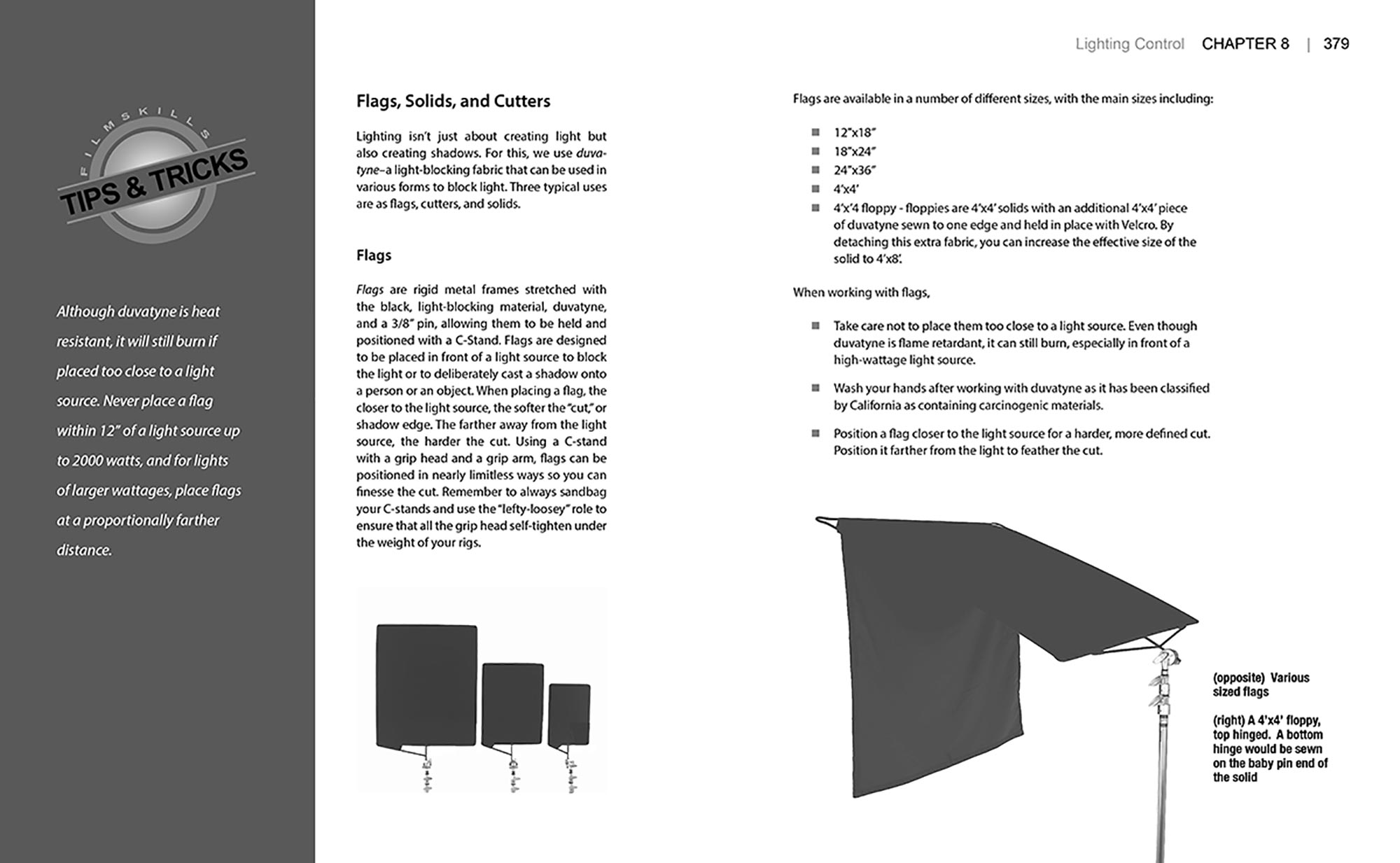
Reducing Light
- Wire Scrims
- Nets
- Dimmers
- Neutral Density (ND) Gel
Diffusion
- Paper Diffusion
- Fabric Diffusion
- Bobinett (Diffusion)
- Silks (Diffusion)
- Grid Cloth (Diffusion)
- Silent Frosts and Hi-Lites (Diffusion)
- Muslins
- Chromakey Green Screen and Blue Screen
Softboxes
Shaping Light
- Barn Doors
- Egg Crates & Louvres
- Flags, Solids, and Cutters
- Flags
- Cutters
- Solids
- Black Wrap
- Cucoloris
- Reflectors and Bounce Boards
- Lamé
- Grifflector
- Microwave
- Ultrabounce
- Griffolyn
- Foam Core
- Bead Board
- Shiny Boards
- Collapsible Reflectors
- Mirrors
Chapter 9 – Grip and Rigging
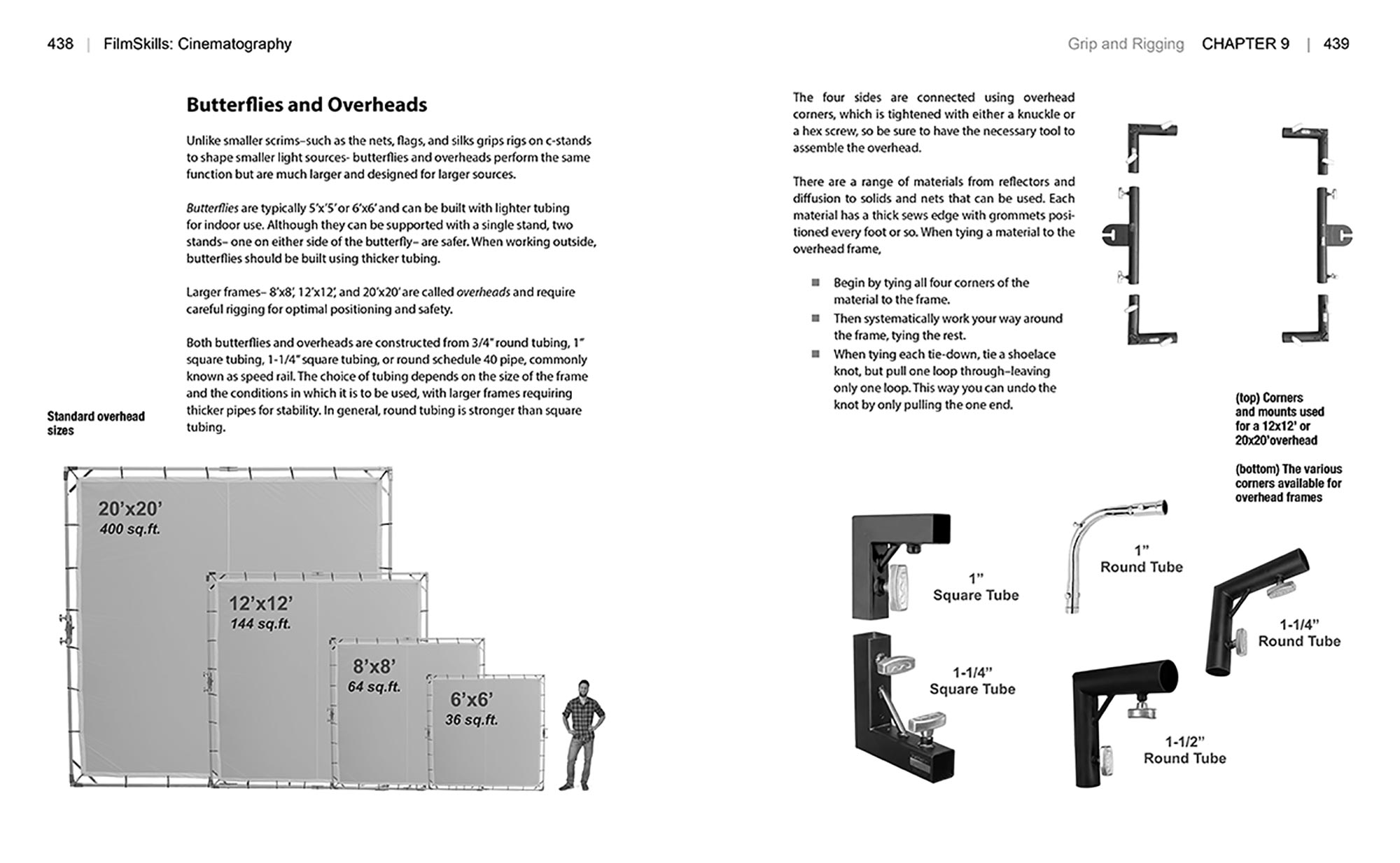
Stands
- C-Stands
- The Base
- The Riser
- The Grip Head
- The Grip Arm
- Baby Stands
- Junior Stands
- Combo Stands
- Mombo Combo
- Preemie Babies
- Medium Roller Stand
- Junior and Senior Roller Stands
- Safety Guidelines When Working with Stands
Clamps and Rigging
- The Fundamentals of Rigging Safely
- Grid Pipe
- Clamps
- Mafers
- Cardellinis
- C-Clamps
- Furniture Clamp
- Platypus Clamp
- Pipe Clamps
- Grid Clamps
- Scissor Clamps
- Safety When Rigging Pipe Clamps
- Grip Clips
- Lollipop
- Offset Arm
- Headers
- Putty Knife
- Baby and Junior Plates
- Chain Vice Grip
- Trombone
- Foam Core Holder
- Wall Spreader
- Apple Boxes
- C-47s
- Sandbags
- Furniture Pads
Butterflies and Overheads
- Overhead Safety
Knots for Rigging
- Loop Knots
- Hitches
- Binding Hitches
- Bends
Grip Rigs
- Goal Post
- Menace Arm
Rigging the Camera
- Car Mounts
- Free Driving
- Camera Car
- Process Trailer
- Tow Dolly
- Hood Mounts and Hostess Trays
- Running Shots
- Safety When Filming Vehicles
Ladder Safety
Grip Toolkit
Chapter 10 – Qualities of Light
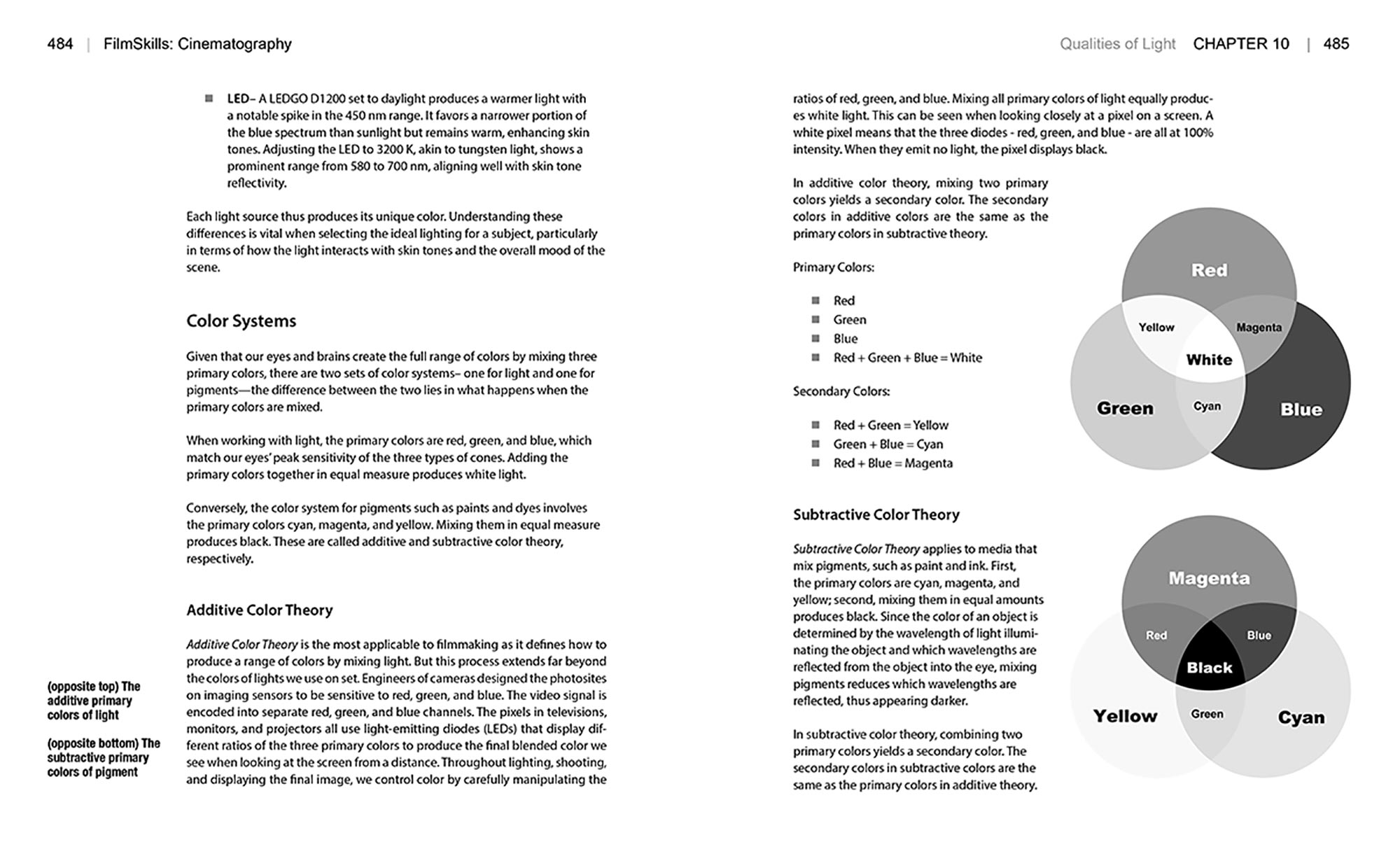
Intensity
- Inverse Square Law
Direction
- Internal and External Shadows
Quality
- Softness vs. Hardness
- Direct Light
- Bounced Light
- Spread
- Specularity
Color
- Electromagnetic Spectrum and Visible Light
- The Color of an Object
- Measuring Color
- Color Systems
- Additive Color Theory
- Subtractive Color Theory
- Color Wheel
- Analogous Colors
- Complimentary Colors
- The Kelvin Scale
- Color Temperature Range
- Tint
- White Balance
- Manually Set White Balance
- Working with Mixed Light
- Gels
- Mixing Colors
Chapter 11 – Lighting Techniques
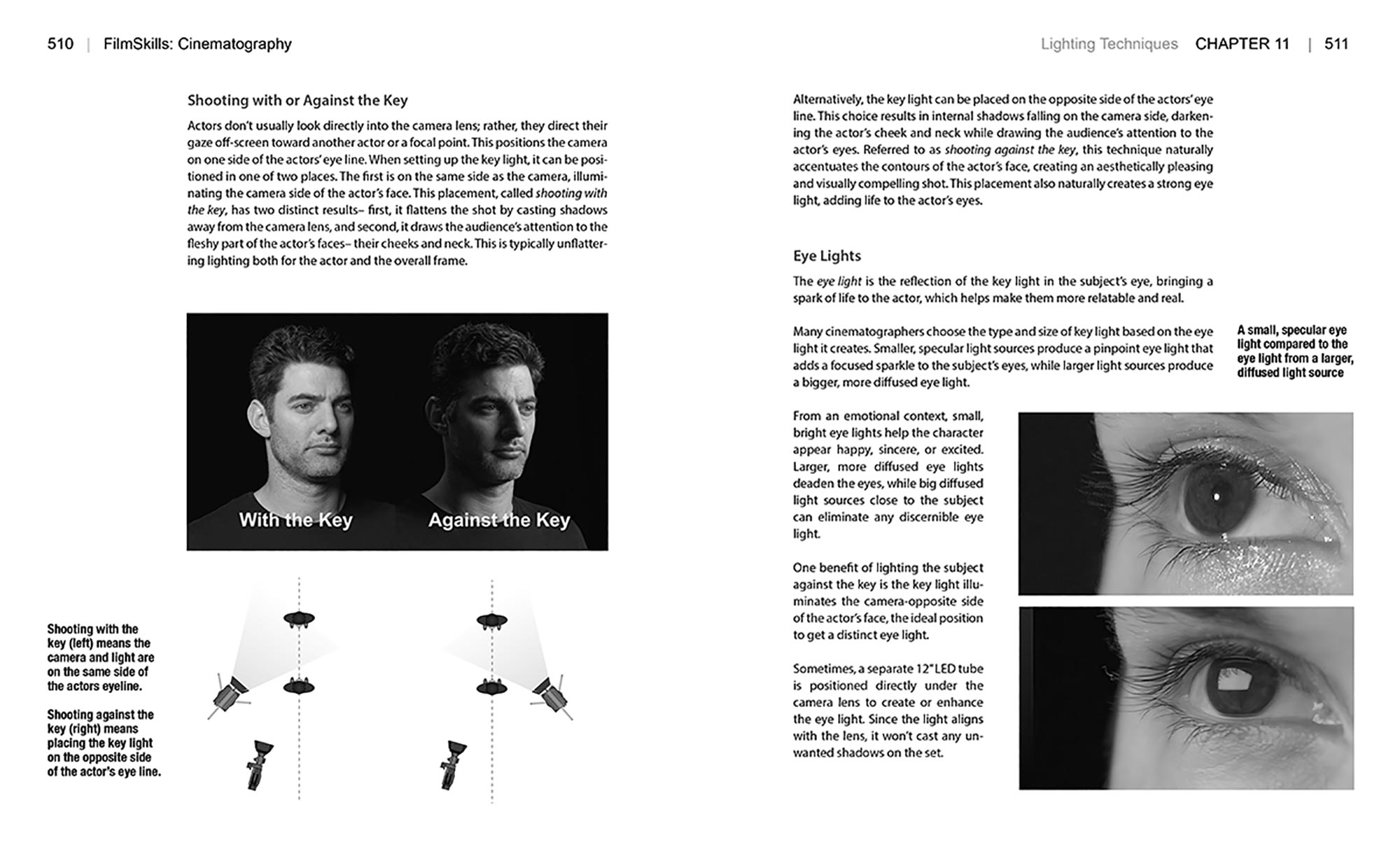
Lighting People
- Key Light
- Direction
- Softness
- Fill Light
- Rim/Back Light
Lighting a Scene
Lighting the Set
Lighting Diagrams
Lighting Outside
- Scout the Location
- Equipment for Lighting Outside
Shooting Green Screen
- Green Screen vs. Blue Screen
- Digital vs. Film
- Log vs Rec 709
- Lighting a Green Screen
- Shooting Full Body
- DIY Green Screen
Chapter 12 – Rules of Composition
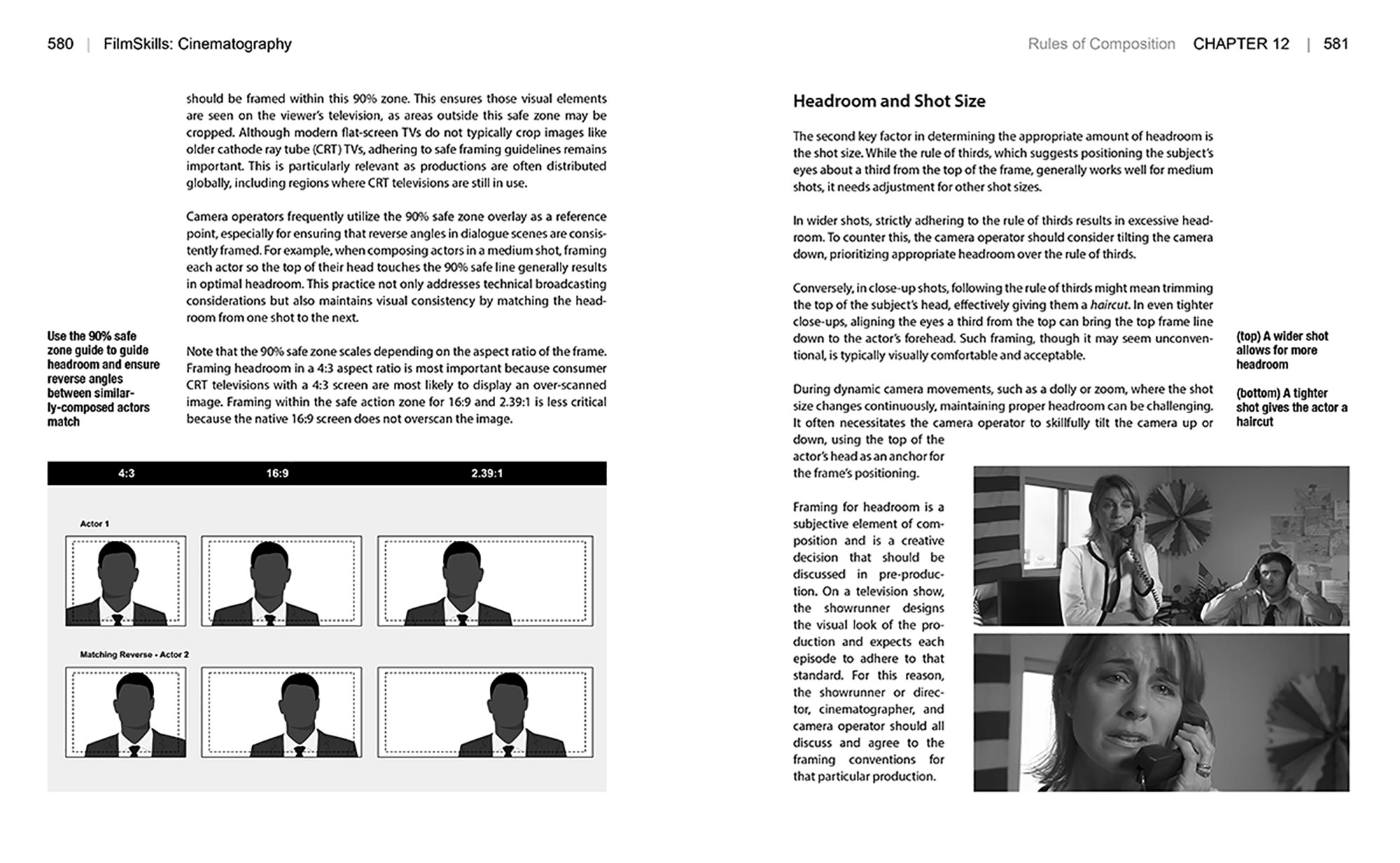
Framing
Shot Types
- Aspect Ratio
- Wide Shots
- Medium Shots
- Close-Ups
- Framing Multiple Actors
- Dutch Angles
Camera Movements
Screen Division
- The Golden Ratio
- Framing for Different Aspect Ratios
- Lines
- Area
Lead Room
- Short Siding
Headroom
- Technical Considerations
- Headroom and Shot Size
Composing People
- Dirty Over the Shoulder Shot
- Variations in Over-the-Shoulder Shots
- Clean Single
- Variations in Clean Singles
- Depth of Field
- Aspect Ratio
- French Overs
Eye Lines
- Cheating Eyelines
- Shifting Eyelines Above or Below the Lens
- Breaking the Fourth Wall
- Eyeline Match
Creating Depth
- Depth Planes
- Midground
- Background
- Foreground
- Parallax
- Focal Length
- Depth of Field
- Moving the Camera
- Blocking the Actors
- Creating Shadows
Screen Direction
- The Line of Action
- The Rule of 180
- Choosing which Side
- Exceptions to the Rule of 180
- Working with Multiple People
- Crossing the Line of Action
Chapter 12 – Tools and Techniques
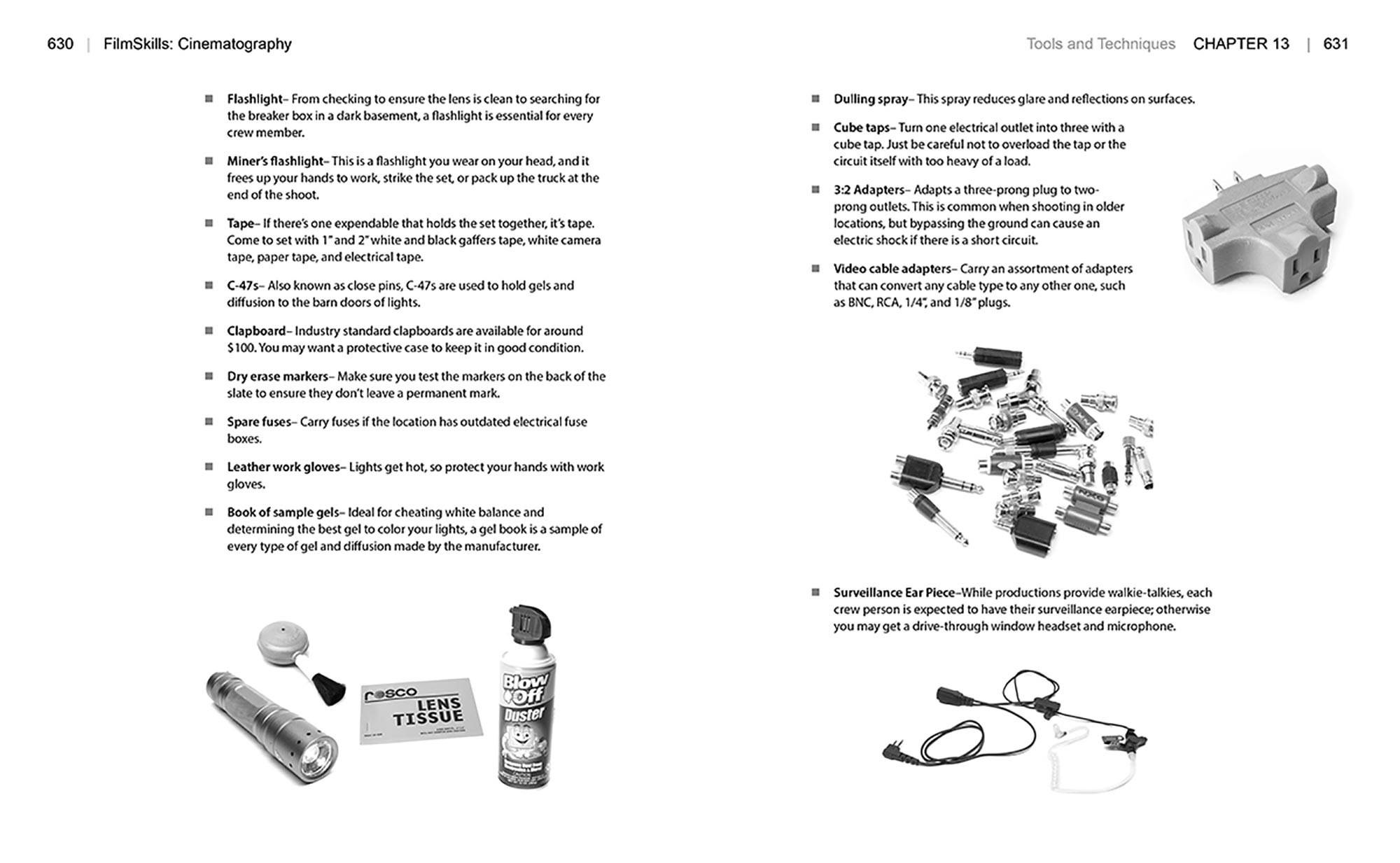
Production Monitors
- SMPTE color bars
- NTSC Limitations
- Calibrating Monitors
Clapboards
- Shot Information
- Syncing Audio to Visuals
- Procedure on Set
- Slating Techniques
- Recording Sync Sound
- Recording Audio Into the Camera
- Recording MOS
- Tail Slate
- Insert Slate
- Smart vs. Dumb Slates
Filmmaker’s Toolkit
Equipment Management
- Choosing the Gear
- Insurance
- Pre-Shoot Prep
- Equipment Care on Set
- Required Tools
- Wrapping a Shoot
- Owning and Renting Your Own Gear

